
Learn more about by visiting our website: www.NorwoodHousePress.com/ Decodables
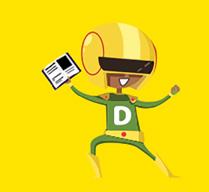
Or scan the QR code to be taken there
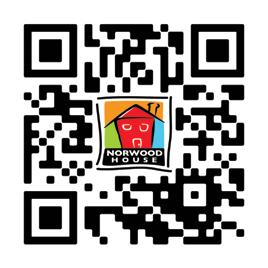
TABLE OF CONTENTS
GENERAL INFORMATION
1–2 Series/Set Descriptions
3 Lesson Components and Resources

4 Series Overview
SEARCH FOR SOUNDS
5 SET OVERVIEW
6 Terrific Transportation
13 Wonderful Weather
20 Come to the Farm
26 Wasps, Hornets, and Honeybees
31 Alphabet Authors
36 Oh! Animals
37 Enchanting Nature
43 A Zany Zoo Visit
51 WORKSHEETS
While you’re there, check out our video about The Decodables, featuring Emily! She talks about the science of reading, why decodable texts work, and how to use these notes along with the books to further enhance learning in the classroom and at home.
Emily Nudds is a literacy coach and is certified to provide ongoing professional development in the Science of Reading. She holds a Masters degree in Literacy and is certified in childhood education, special education and literacy education and has taught first through fourth grades. She specializes in reading and writing instruction in the primary grades and identification and intervention of struggling readers. She lives with her husband, three children and golden retriever in Pittsford, NY.

N ORWOOD WO OD H OUSE O USE P RESS
Introduction
Series Description

The Decodables series contains books following a systematic, cumulative phonics scope and sequence aligned with the science of reading. Each book allows its reader to apply their phonics knowledge in engaging and relatable texts. The words within each text have been carefully selected to ensure that readers can rely on their decoding skills as they encounter new or unfamiliar words. They also include high frequency words appropriate for the target skill level of the reader.
The lesson plans in this guide follow the scope and sequence of The Decodables and can be used as a supplement to any core phonics program. The lessons are designed using a phonics lesson plan template that requires explicit instruction. Following similar routines in each lesson allows the student to focus their energy on learning new phonic decoding skills. The lessons are systematic and cumulative, building new skills on skills that have been previously taught. They allow for a gradual release of responsibility (I do, We do, You do). The lessons provide opportunities to build spelling skills and increase vocabulary. The lessons are aligned with standards addressing foundational language and literacy skills. By following these lesson plans, teachers can ensure their students have the skills necessary to accurately, automatically, and fluently read the texts in The Decodables series.
Set Descriptions
Search for Sounds — In this set of lessons and texts, students will be introduced to all consonants and vowels that make up our alphabet. They will engage with the text by listening to the story read aloud, listening for words with target sounds in them and identifying the picture of the word that makes the target sound. Teachers and/ or caregivers will support students in identifying the letter that makes the target sound. Afterwards, Reading Activities are provided to build vocabulary knowledge, work on comprehension skills and build early reader response skills.
Friends and Family Fun — In this set of lessons and decodable texts, students will be introduced to all five short vowel sounds. They will begin reading consonant- vowel- consonant (CVC) words and move towards reading CVC words containing consonant digraphs and suffix -s. Following an explicit phonics lesson plan, students will engage their phonological processor through a phonemic awareness warm up. From there, they will practice decoding and encoding at the word level before moving to the sentence and story level. Students will apply their phonic knowledge as they fluently read The Decodables.
Things We Like to Do — In this set of lessons and decodable texts, students will be introduced to consonant blends as well the suffixes -ing and -ed. They will read words containing two and three letter blends found at both the beginning and ending of words. Students will continue to build their phonemic awareness skills through segmenting, blending and manipulating phonemes. They will decode and encode individual words before reading and spelling in sentences and stories. Students will apply their cumulative phonic knowledge as they read The Decodables.
1
Activities with Friends — In this set of lessons and decodable texts, students will be introduced to long vowel sounds spelled using a vowel- consonant- e (VCe) spelling pattern. Students will increase their phonemic awareness skills, focusing mostly on the advanced phonemic awareness skill: phoneme manipulation. Students will strengthen their reading and spelling skills at the word, sentence and story level. Students will build automaticity and fluency as they apply their knowledge while reading The Decodables.
Discover Plants and Animals — In this set of lessons and decodable texts, students will be introduced to the many vowel teams of the English language as well as the suffix -y. Students will strengthen their advanced phonemic awareness skills through phoneme manipulation tasks, but will remove all scaffolds. Students will continue to strengthen their reading and spelling skills in multi- syllabic words containing vowel teams, suffix -y and all previously taught phonics skills. Students will continue to apply their cumulative phonics skills as they read The Decodables.
Fables and Folktales — In the final set of lessons and decodable texts, students will learn about r- controlled vowels, diphthongs and complicated vowel teams. Students will continue to strengthen their phonemic awareness skills through blending, segmenting and manipulating phonemes within words without the use of scaffolds. Students will apply their increased phonic knowledge as they decode and encode multi- syllabic words, sentences and stories containing r- controlled vowels, diphthongs, complicated vowel teams and all previously taught skills. They will apply their skills in connected text while reading The Decodables.
2
Lesson Components and Resources
This section provides an explanation of the instructional routines found in each component of the lesson plans designed specifically for the Search For Sounds texts.
Teacher Notes:
• This section describes the pre teaching that should occur prior to reading the text.
Story Guide:
• Teachers will read from this section as students engage with the text.
Vocabulary Development:
• Students will learn new content specific vocabulary as well as comprehension specific vocabulary.
• Picture sorts are used to develop categorization skills.
Comprehension:
• Students practice sharing their understanding of the text by retelling narratives and identifying key ideas and details in informative texts.
Extension Activity:
• Students extend their learning through reader response activities that require them to share their learning using a combination of drawing and writing.
3
The Decodables — Series Overview
The Decodables series contains books following a systematic, cumulative phonics scope and sequence aligned with the science of reading. Each book allows its reader to apply their phonics knowledge in engaging and relatable texts. The words within each text have been carefully selected to ensure that readers can rely on their decoding skills as they encounter new or unfamiliar words. They also include high-frequency words appropriate for the target skill level of the reader.
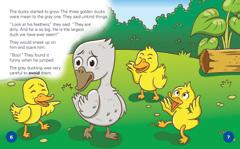
Within the 6 different sub series, readers grow comfortable with a mix of formats; wordless books and fiction and nonfiction with photos or original art illustration. Readers will also learn various components of books such as chapters, tables of contents, and word lists.
Fables and Folktales
The Decodables — Complete Series












Search for Sounds Grade K Set 1 (8 books)

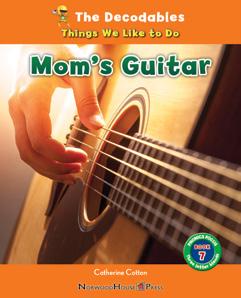
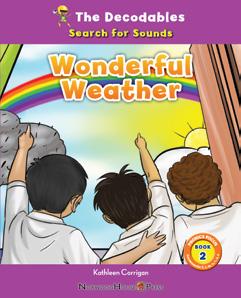
Friends and Family Fun Grade K-1 Set 2 (12 books)
Things We Like to Do Grade 1 Set 3 (8 books)
Activities with Friends Grade 1 Set 4 (6 books)
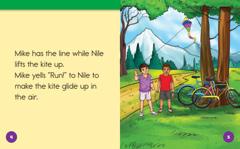









Discover Plants and Animals Grade 2 Set 5 (9 books)

Fables and Folktales Grade 2 Set 6 (9 books)
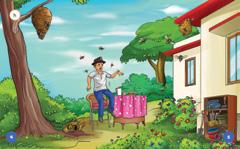




Things We Like to Do

Friends and Family Fun
Activities with Friends
Discover Plants and Animals

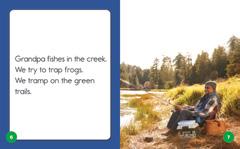
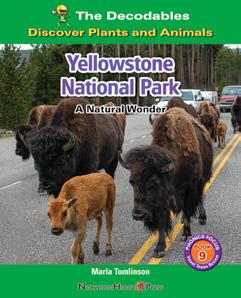
4
Search for Sounds
Search for Sounds — Overview
The Search for Sounds series is designed to help students develop phonemic awareness within the context of story and picture. Students are presented with wordless books and have fun finding items in the pictures that highlight target sounds. Each sound’s related letter is also on the page in a clear lower case font. Cumulative read-aloud texts linked to the pictures are read by the teacher and present social studies and science concepts of interest to young children. Some of the books include recurring characters exploring the topics while others are more typical nonfiction. Interest will be generated as your students work to isolate, identify, and link the sounds to words. The books include lists of suggested words/sounds to search for as well as a note to the caregiver.

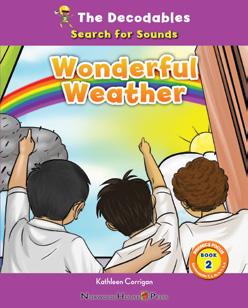
The Decodables — Search for Sounds (Set 1)
Terrific Transportation
Wonderful Weather
Come to the Farm
Wasps, Hornets, and Honey Bees

Alphabet Authors

Oh! Animals
Phonics Focus
Consonants with sound in initial position of letter name

Consonants with sound in the final position of letter name


Consonants with sounds that overlap another letter




Consonants with a name with no sound
Short Vowels
Short Vowels
Enchanting Nature Short Vowels
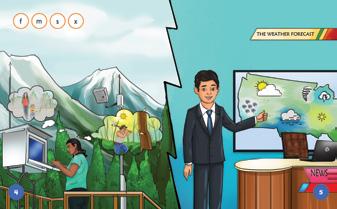

A Zany Zoo Visit Review
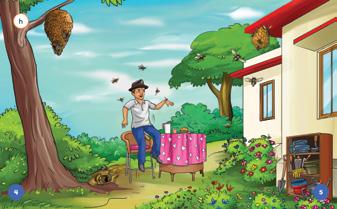
5
Wonderful Weather
Wonderful Weather Wasps, Hornets, and Honey Bees
Terrific Transportation — Teacher Notes
Component: Materials: Lesson Plan:
Teacher Notes
Search for Sounds books are meant to build phonemic awareness and to begin matching initial phonemes to graphemes (sounds to letters). Focus letters and their corresponding sounds should be introduced and practiced prior to engaging with this text.
Focus Letters: b, d, j, k, p, q, t, v, z
● Picture cards of After reading the text, review that transportation means to move Development various vehicles someone or something from one place to another. Vehicles are used to move people or things. There are many kinds of vehicles.
Vocabulary
on pages 9–12
Comprehension
3 column sorting sheet on page 56
● Have students brainstorm the vehicles they remember from the text. They may use the book to help them remember. Encourage students to use precise vocabulary for each vehicle.
Have students cut out the vehicle picture cards.
Sort the cards into the following categories: vehicles that travel on the ground/ in the air/ on the water.
After students sort by the categories listed above, challenge them to sort the vehicles in a different way of their choosing. (Categories may include: vehicles for jobs/ vehicles for fun -or- vehicles with wheels/ vehicles without wheels).
● The book Terrific Transportation
Students should practice retelling the book by identifying the characters, the setting, and a few key details.
● Characters are who the story is about. Main characters are who the story is mostly about.
Who are the main characters in this text? (Bob, Victor, Zara)
● The setting is where the story takes place or happens.
Look at each page and identify the setting:
P. 2–3: classroom
P. 4–5: city
P.6: lake
P. 7: sledding hill
P. 8–9: school
● Share about the kinds of vehicles the kids saw throughout the book and what they are used for.
Extension Activity ● Paper
Reader Response Journal Entry:
● Writing/ Use a combination of drawing, dictating, labeling and/ or writing to Drawing Tools share about a vehicle you learned about today that was new to you.
6
Pages 2 and 3
Hi everyone! My name is Bob. I am five years old. I am one of the boys in my kindergarten class. My class is learning about transportation. Do you know what transportation is? My teacher says it is the way we travel from place to place, or how things are carried from one place to another place. We can walk or run, but usually we use vehicles for transportation.
My teacher put up a poster that shows some vehicles. The poster gave us an idea. My friends Zara, Victor, and I are hunting for transportation toys in our classroom. It is lots of fun. We have found a van, a jet, a bus, a bulldozer, two trucks, two boats, and a digger. Look at Zara jump! She has found another vehicle. It is a bike. Now we have ten vehicles. Can you name them all?
Keywords:
bike, blocks, boats, Bob, boys, bus, teacher, toys, van, vehicles, Victor d,
Pages 4 and 5
Vehicles can be tools for workers. Construction workers use big vehicles to help them build bridges, buildings, and roads. A digger scoops the dirt out of the ground. This one is making a basement for a new building. A bulldozer can push the dirt to make the ground smooth. A dump truck carries important things to the builders and takes junk away.
Some workers travel a lot in their vehicles. A taxi driver drives around taking people where they need to go. A tow truck driver helps vans, cars, and trucks that get stuck. And a police officer needs a good police car to rush to people who need help.
Some workers travel on water for work. Barges are like water trucks. They carry big loads down a river or lake. Tugboats help other boats get where they need to go.
Many other workers, like bus drivers, use vehicles for work. Can you think of some more?
Keywords: digger, dirt, dump truck, people, police car, taxi, tow truck, tugboats k,
Kids and grownups use vehicles when they are playing and having fun.
When the weather is warm, there are many ways to play on vehicles. Zara and I like to ride our bikes near the lake.
We stop to look at the boats on the lake. Victor is in a kayak with his friend, Quinton. We wave to them, but they are so busy paddling that they don’t see us. Victor’s dad is paddling standing up!
My mother likes to ride her quad bike in the field by the lake. She is having fun with the people on dirt bikes.
Keywords: kayak, kickstand, paddling, people, quad, Quinton
7
— Story Guide b, t, v
Terrific Transportation
p, t
p, q Page 6
Page 7
We can play on vehicles when the weather is cold, too. I went to a winter festival with my family, and I saw lots of vehicles.
Some people had fun sliding down a big hill on their toboggans. They could go very fast. Other people used the ice rink. They had to stop sometimes to let the Zamboni clear the ice and make it smooth again. I would like to drive a Zamboni when I am big. It looks like fun, and it is an important job.
After we had been outside for a while, we bought hot chocolate and donuts from a man in a tent. He had other tasty treats to sell, too.
Did you notice that these vehicles don’t have wheels? Sometimes vehicles can slide on the ground instead of turning wheels. I like to slide on the ice in my boots!
Keywords: tent, toboggans, Zamboni, zigzag
Pages 8 and 9
My school is a busy place. There are lots of kids and everyone must use transportation to get to school. We also need to get from place to place in the building.
I walk to school with my big brother, so I don’t use a vehicle. My transport is walking. Today I have on my boots because it is wet outside.
Jackie comes to school in a special van. It lowers her wheelchair to the ground so she can go right into the playground.
A lot of people come on buses. The buses line up. A teacher watches to make sure everyone gets off safely. Then they go to the school yard.
Zara just got out of a truck. She grabs her backpack and waves goodbye to her dad. He was her driver today. Sometimes her big brother drives her instead.
Zara and I will go to the kindergarten playground to meet Victor and our other friends. We can play with toys or dig, or just run around until the bell rings. Then we will jump, skip, or run to line up.
Keywords: backpack, Bob, boots, brother, buses, Jackie, jump, people, playground
v, z
Pages 10 and 11 We have learned so much about transportation in my kindergarten class. We learned that some kinds of transportation work on land. Other kinds of transportation work in water or in the air. We’ve learned about moving from place to place using our bodies and using vehicles. Today, Victor, Zara, and I are painting transportation pictures. We are each painting four of our favorite vehicles. I am painting a land picture. Zara is painting an air picture. Victor is painting a water transportation picture.
When we are done, our teacher will help us write the names of each vehicle. I can write a letter for the first sound I hear and she will help me with the rest. Why don’t you look at our pictures and see what vehicles we like the best? Do you have other favorites?
Keywords: balloon, Bob, bulldozer, dirt, drawing, dump truck, jet, jet ski, kayak, pirate ship, poster, quad bike, teacher, tugboat, vehicle, Victor, Zamboni, Zara
8 t, z
b, j, p
b, d, j, k, p, q, t,
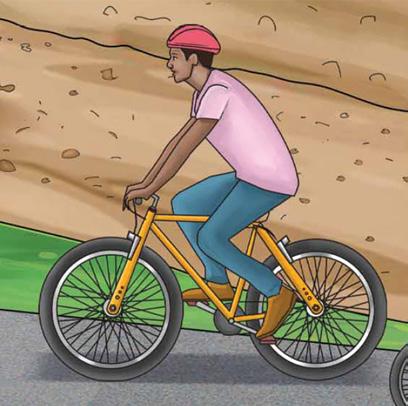
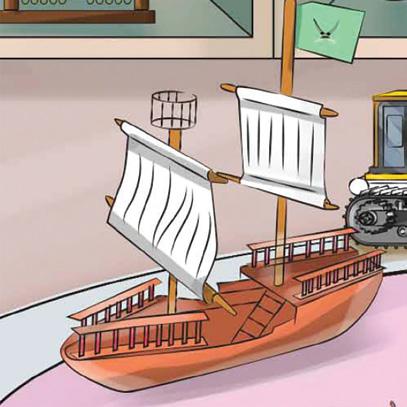
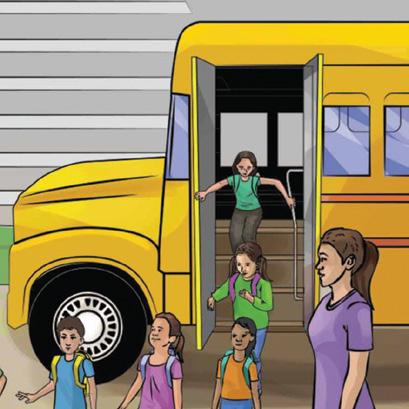

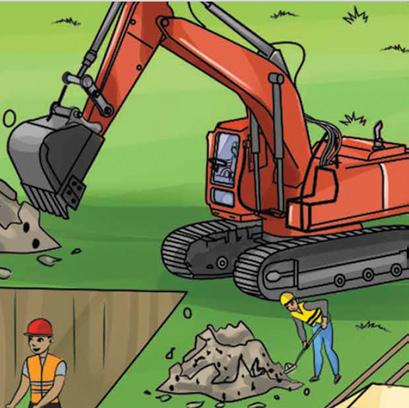


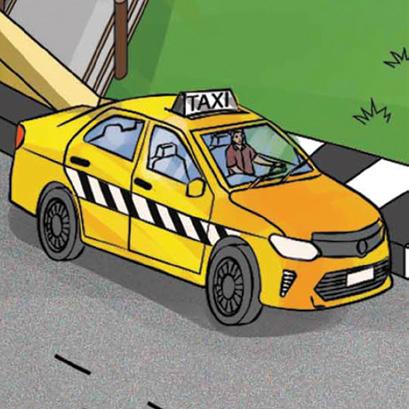
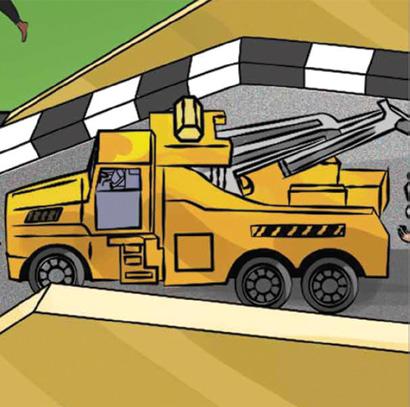
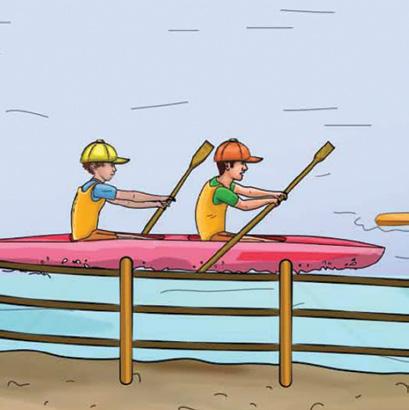
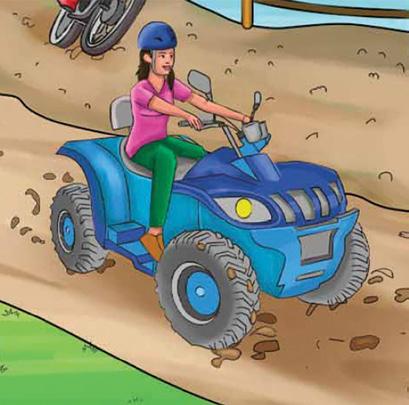
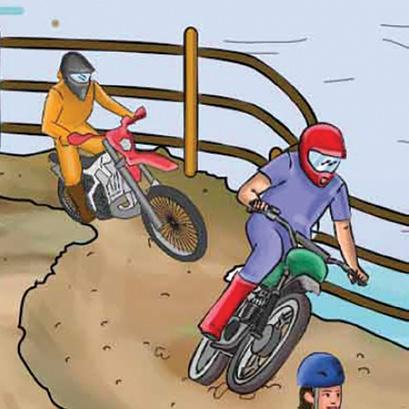
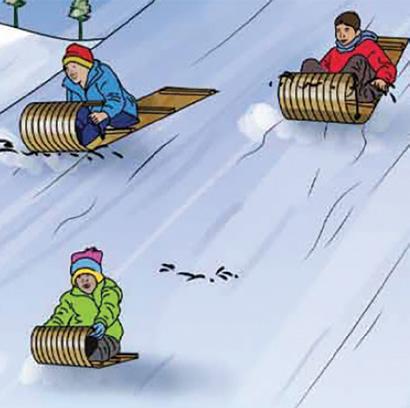

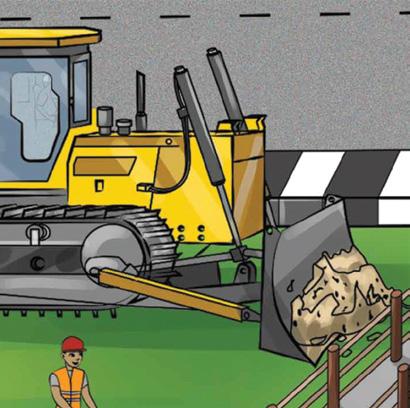
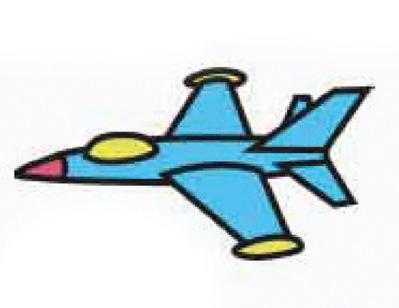


Alphabet Arc
Objective
The student will name and match letters of the alphabet.
Materials
• Alphabet Arc
• 12” x 18” construction paper
Enlarge Alphabet Arc and glue to 12” x 18” construction paper.
• Set of uppercase letters (e.g., foam or plastic)
Activity
Students match letters of the alphabet to the Alphabet Arc.
1. Place the Alphabet Arc and the set of letters on a flat surface.
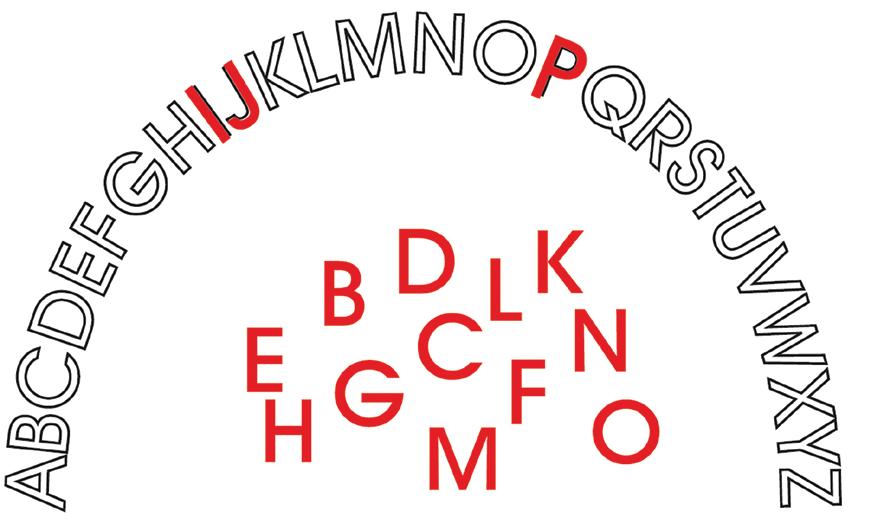
2. The student chooses a letter, names it (e.g., “p”), and places it on the corresponding letter on the Alphabet Arc.
3. Continue until all letters are matched.
4. Self-check
Extensions and Adaptations
• Match lowercase alphabet letters to the Arc.
• Complete partial Alphabet Arc on page 55.
• Select a letter with eyes closed and try to identify it by its shape. Open your eyes, name the letter, and place it on the corresponding letter on the Alphabet Arc.
51

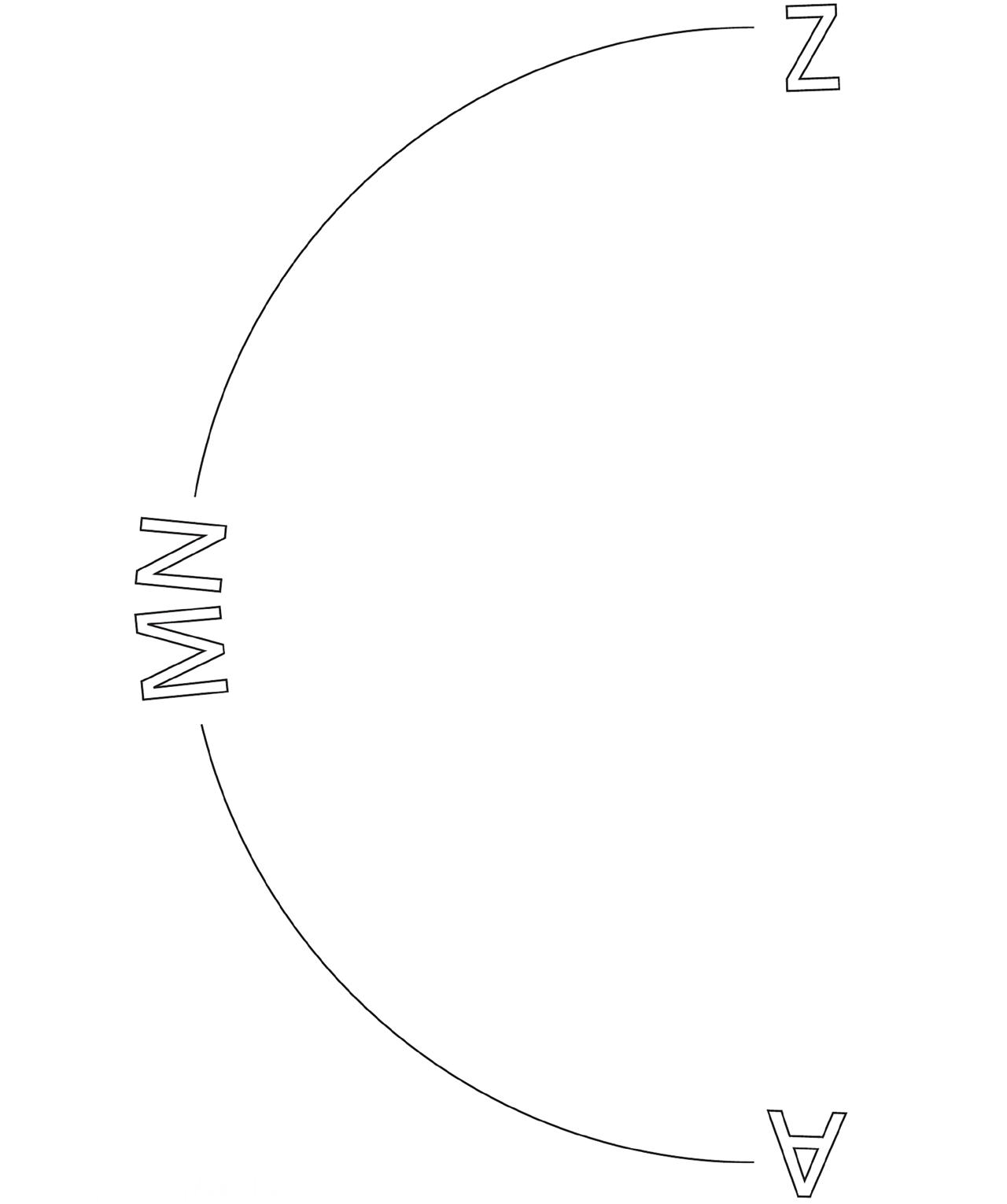
54
Name: Date: Venn Diagram
Name: Date: Sorting Sheet
55
56
Name: Date: Sorting Sheet
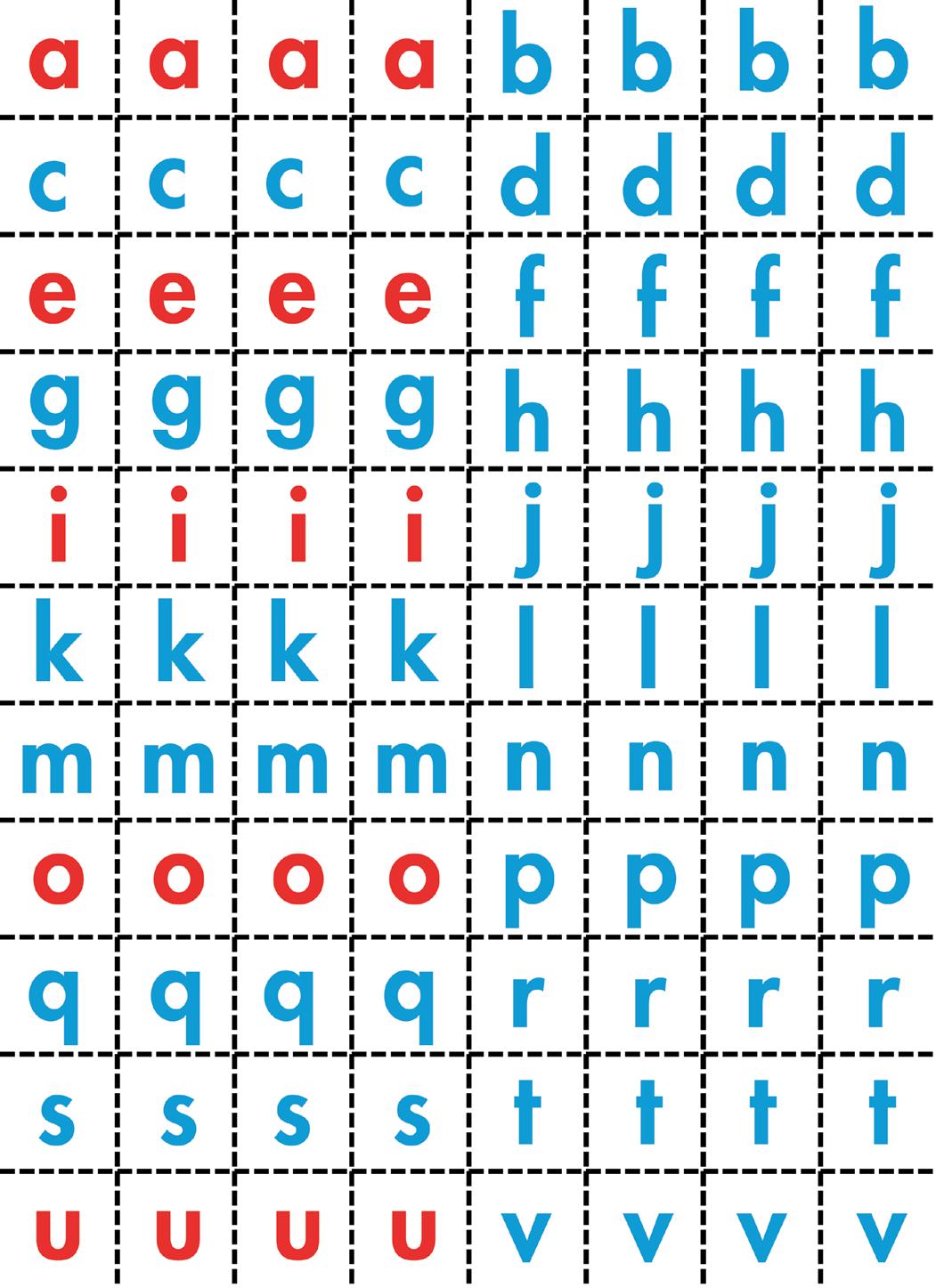
43

44

45

46
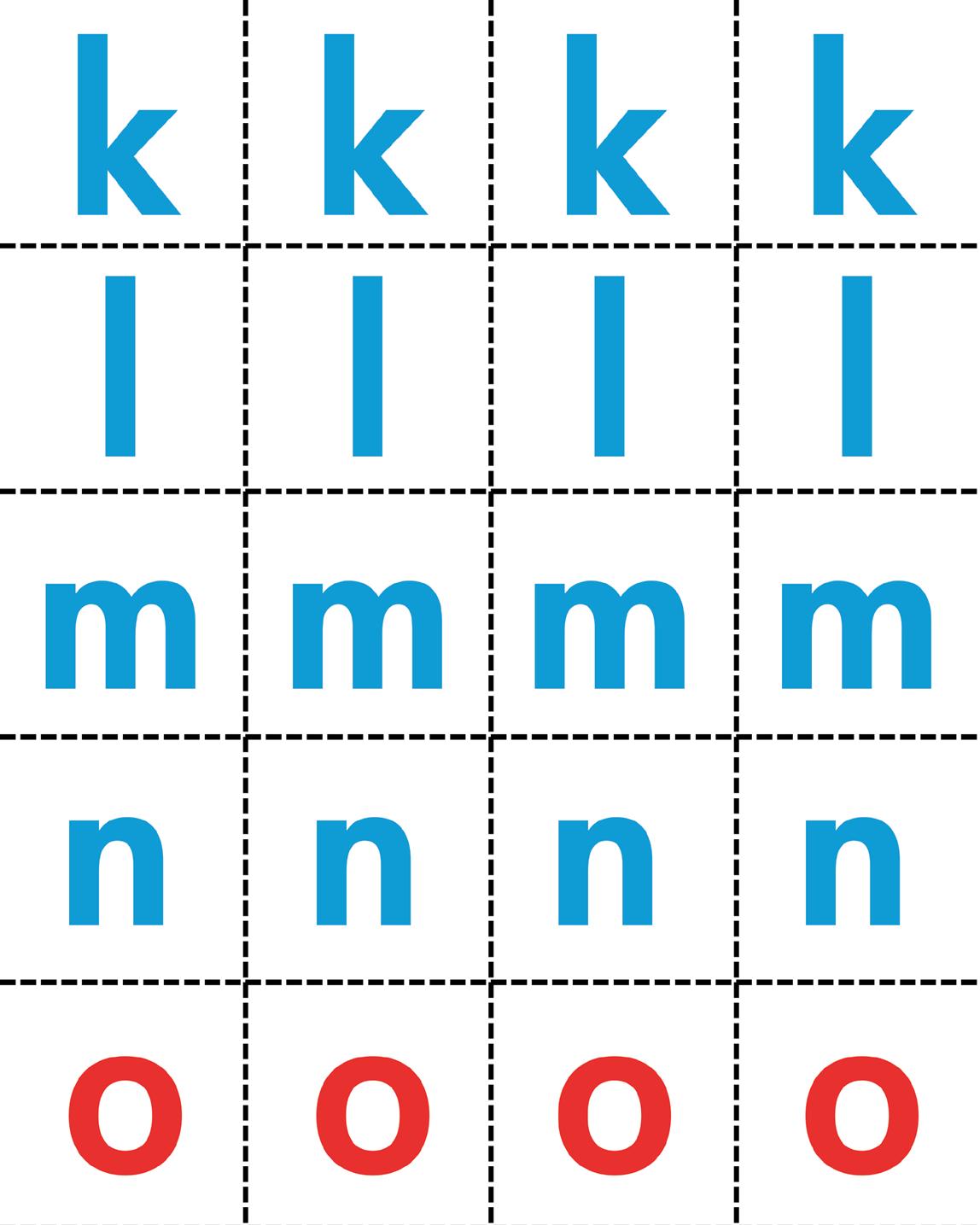
47
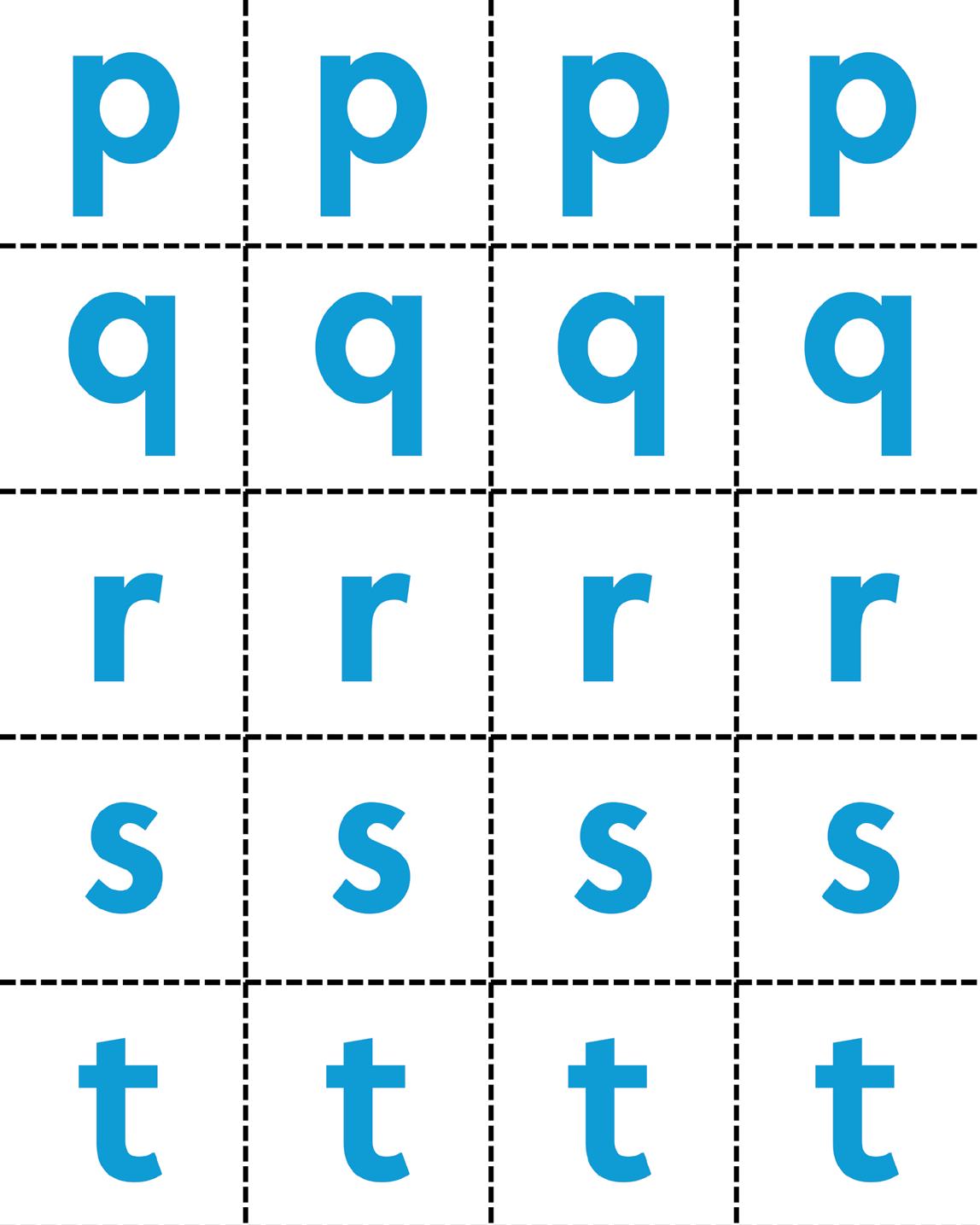
48
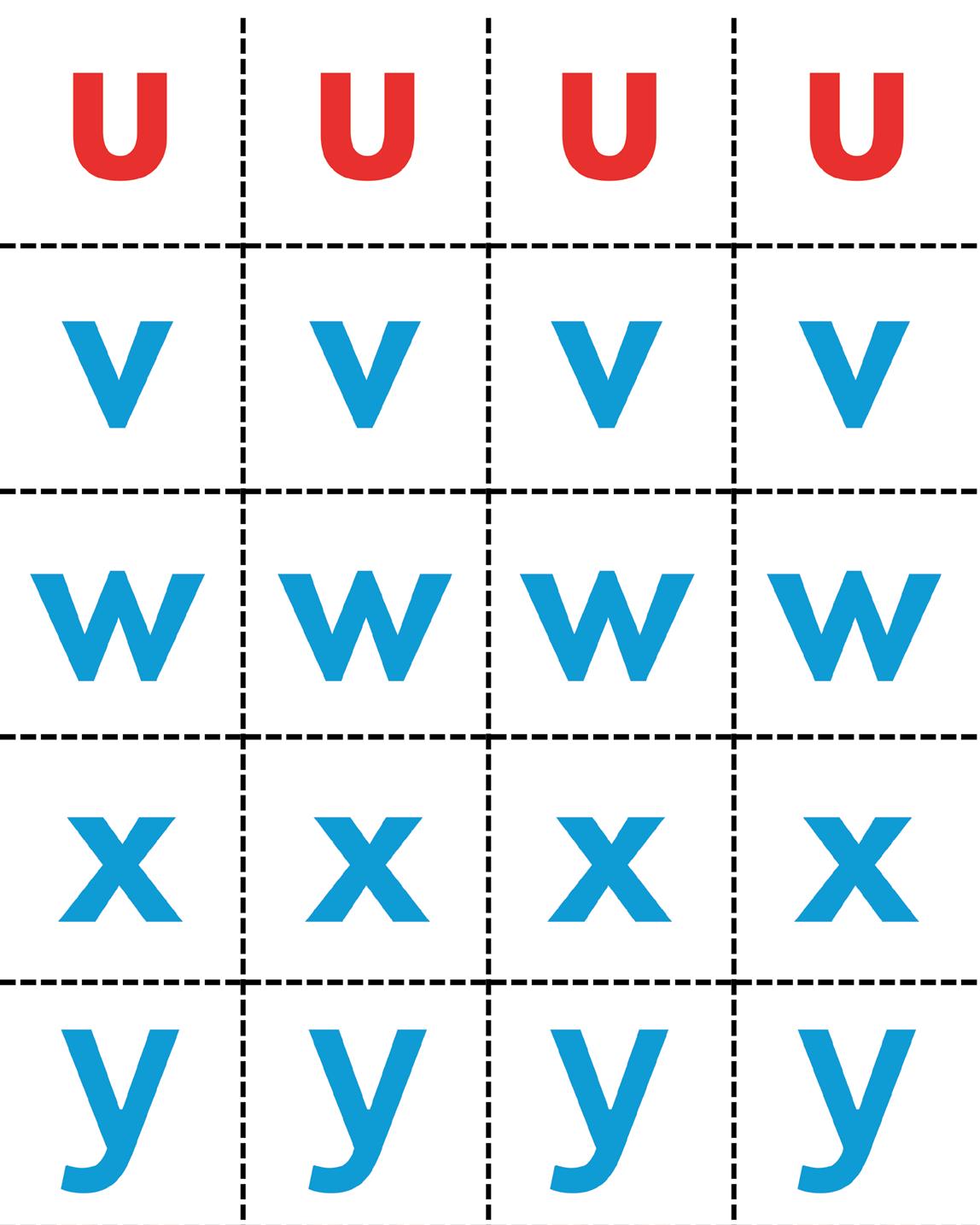
49
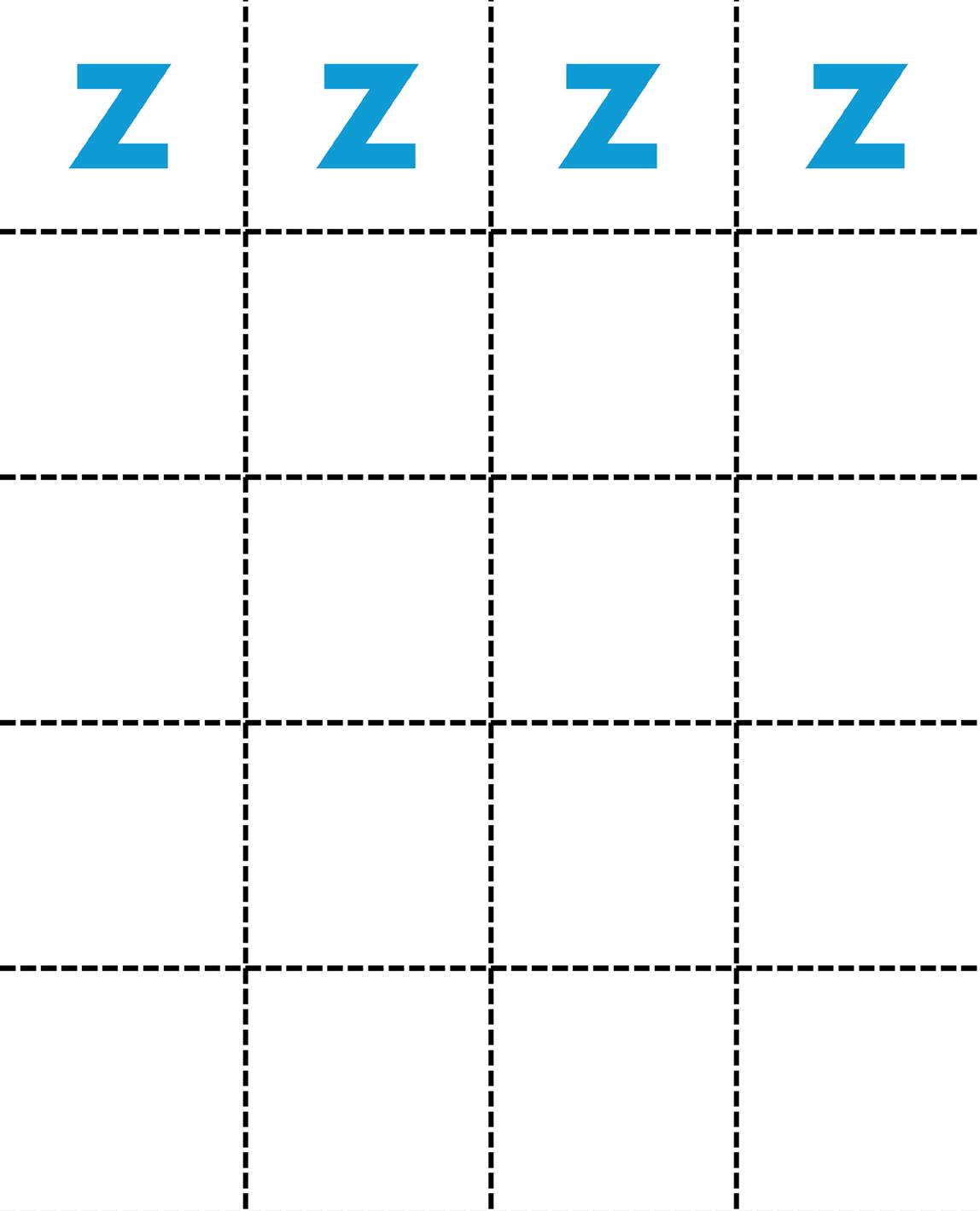
50

Learn more about by visiting our website:
www.NorwoodHousePress.com/ Decodables
Or scan the QR code to be taken there

TABLE OF CONTENTS
GENERAL INFORMATION
1–2 Series/Set Descriptions
3–5 Lesson Components and Resources

6 Series Overview
FRIENDS AND FAMILY FUN
7 SET OVERVIEW
8 Sam Naps
11 Tim Has a Fit
15 Bob Jogs
19 Mutt and Pug
21 Ben Gets a Pet
23 The Vet Has a Party
27 Chet Goes to the Beach
30 Chet and Shan Find Shells
33 Thunder at the Beach
35 Zack and Chet on the Dock
40 Zack and the Whale
41 At the Beach
42 LETTER TILES
While you’re there, check out our video about The Decodables, featuring Emily!

She talks about the science of reading, why decodable texts work, and how to use these notes along with the books to further enhance learning in the classroom and at home.

50 DIGRAPH TILES
Emily Nudds is a literacy coach and is certified to provide ongoing professional development in the Science of Reading. She holds a Masters degree in Literacy and is certified in childhood education, special education and literacy education and has taught first through fourth grades. She specializes in reading and writing instruction in the primary grades and identification and intervention of struggling readers. She lives with her husband, three children and golden retriever in Pittsford, NY.
N ORWOOD WO OD H OUSE O USE P RESS
Introduction
Series Description

The Decodables series contains books following a systematic, cumulative phonics scope and sequence aligned with the science of reading. Each book allows its reader to apply their phonics knowledge in engaging and relatable texts. The words within each text have been carefully selected to ensure that readers can rely on their decoding skills as they encounter new or unfamiliar words. They also include high frequency words appropriate for the target skill level of the reader.
The lesson plans in this guide follow the scope and sequence of The Decodables and can be used as a supplement to any core phonics program. The lessons are designed using a phonics lesson plan template that requires explicit instruction. Following similar routines in each lesson allows the student to focus their energy on learning new phonic decoding skills. The lessons are systematic and cumulative, building new skills on skills that have been previously taught. They allow for a gradual release of responsibility (I do, We do, You do). The lessons provide opportunities to build spelling skills and increase vocabulary. The lessons are aligned with standards addressing foundational language and literacy skills. By following these lesson plans, teachers can ensure their students have the skills necessary to accurately, automatically, and fluently read the texts in The Decodables series.
Set Descriptions
Search for Sounds — In this set of lessons and texts, students will be introduced to all consonants and vowels that make up our alphabet. They will engage with the text by listening to the story read aloud, listening for words with target sounds in them and identifying the picture of the word that makes the target sound. Teachers and/ or caregivers will support students in identifying the letter that makes the target sound. Afterwards, Reading Activities are provided to build vocabulary knowledge, work on comprehension skills and build early reader response skills.
Friends and Family Fun — In this set of lessons and decodable texts, students will be introduced to all five short vowel sounds. They will begin reading consonant- vowel- consonant (CVC) words and move towards reading CVC words containing consonant digraphs and suffix -s. Following an explicit phonics lesson plan, students will engage their phonological processor through a phonemic awareness warm up. From there, they will practice decoding and encoding at the word level before moving to the sentence and story level. Students will apply their phonic knowledge as they fluently read The Decodables.
Things We Like to Do — In this set of lessons and decodable texts, students will be introduced to consonant blends as well the suffixes -ing and -ed. They will read words containing two and three letter blends found at both the beginning and ending of words. Students will continue to build their phonemic awareness skills through segmenting, blending and manipulating phonemes. They will decode and encode individual words before reading and spelling in sentences and stories. Students will apply their cumulative phonic knowledge as they read The Decodables.
1
Activities with Friends — In this set of lessons and decodable texts, students will be introduced to long vowel sounds spelled using a vowel- consonant- e (VCe) spelling pattern. Students will increase their phonemic awareness skills, focusing mostly on the advanced phonemic awareness skill: phoneme manipulation. Students will strengthen their reading and spelling skills at the word, sentence and story level. Students will build automaticity and fluency as they apply their knowledge while reading The Decodables.
Discover Plants and Animals — In this set of lessons and decodable texts, students will be introduced to the many vowel teams of the English language as well as the suffix -y. Students will strengthen their advanced phonemic awareness skills through phoneme manipulation tasks, but will remove all scaffolds. Students will continue to strengthen their reading and spelling skills in multi- syllabic words containing vowel teams, suffix -y and all previously taught phonics skills. Students will continue to apply their cumulative phonics skills as they read The Decodables.
Fables and Folktales — In the final set of lessons and decodable texts, students will learn about r- controlled vowels, diphthongs and complicated vowel teams. Students will continue to strengthen their phonemic awareness skills through blending, segmenting and manipulating phonemes within words without the use of scaffolds. Students will apply their increased phonic knowledge as they decode and encode multi- syllabic words, sentences and stories containing r- controlled vowels, diphthongs, complicated vowel teams and all previously taught skills. They will apply their skills in connected text while reading The Decodables.
2
Lesson Components and Resources
This section provides an explanation of the instructional routines found in each component of the lesson plans. Lesson components are color coded for ease in use.
Phonological Awareness Warm Up:
• Scaffolds: Use plastic chips, discs, cubes, etc. as scaffolds to represent the individual phonemes (sounds) in each word. Fingers may also be used to tap the individual sounds. Starting with the pointer finger, use your thumb to tap one sound per finger. To blend the sounds, sweep your thumb across each finger while saying the whole word. When a 5th sound is present, return to the pointer finger to make the final sound before sweeping your thumb to blend the whole word.
• Syllable Counting: Teacher says a multisyllabic word. Students repeat the word and count the number of syllables.
• Syllable/ Affix Addition: Teacher says a base word. Students repeat the base word. Teacher adds a prefix or a suffix and the students blend to make a new word. (Ex: Teacher says “hope”. Students say “hope”. Teacher says “Add -ful to the end, and the word is…” Students say “hopeful”.)
• Word Blending: Teacher pushes 1 chip up while saying each sound in the word. Students then blend the sounds to make a word. (Ex: Teacher says “/m/ /a/ /t/” while pushing up a disc for each sound. Students say “mat”.)
• Word Segmenting: Teacher says a word. Students repeat that word. Students then push up a disc to represent each sound in the word. (Ex: Teacher says “mat”. Students repeat “mat” then push up a disc while saying “/m/ /a/ /t/”.)
• Sound Deletion: Teacher (T) says a word. Students (S) repeat the word. Teacher says “Without /_/ what’s left is…”
Ex: T- Say: play
S- play
T- Say: Without /l/ what’s left is…
S- pay
• Sound Substitution: Teacher says a word. Students repeat the word. Teacher says “Change/_/ to /_/ and the word is ...” Students substitute the initial, medial or final sound as directed by the teacher and state the new word. Use scaffolds to indicate the position of the sound being changed as needed.
Ex: T- Say: bug
S- bug
T- Say: Change /b/ to /r/ and the word is…
S- rug
• When no longer needed, remove the scaffolds.
3
Introduce New Concept:
• Always model the concept being taught using multiple examples of words that fit the concept.
• Letter tiles are used to show individual sounds. We’ve included 2 sets of letter tiles: larger tiles for teachers to use and smaller tiles for students. We’ve also broken the letters up by color: vowels are red and consonants are blue.
• Digraphs are represented with 2 letters on 1 tile to represent 1 sound.
Guided Practice:
• Teacher and students should complete these activities simultaneously.
• Teacher models the work while students practice using their own materials.
• Teacher gives immediate, corrective feedback.
• Students should correct their work.
• Word Building:
– Use letter tiles to build words for students to decode.
– Each sound in the word should be represented with one tile. Each consonant and vowel should have its own tile. Each digraph and vowel team should be represented with its own tile.
• Word Chaining:
– Use tiles to build words for students to decode.
– Change only one tile in the word to make a new word.
Ex: bug-> rug-> rig-> jig-> jog
Extended Practice:
• Students complete these tasks independently while the teacher circulates and listens to individual students.
• Teachers may consider pulling a small group of students to complete these tasks.
• Immediate, corrective feedback should be provided.
• Word Cards:
– Word cards are created to move students from individual sound segmentation and blending to fluent decoding of words.
– Students read the cards one at a time.
– Students should be able to quickly blend the words rather than segment each sound.
– Word cards can be used for a variety of games.
– Word cards should not be used to flash for memorization. Their purpose is to present a word in its entirety rather than in segmented sound tiles. If students need to segment and blend the sounds on the cards, they may.
4
• Word Lists:
– Students highlight the target sound within each of the words.
– Students read the words across the page or down the page, as indicated by the worksheet.
– Students should notice the parts of the words that remain the same and those that change.
– Students should reread these lists for additional fluency practice.
Dictation Practice:
• Teacher dictates the word or sentence and students repeat the word or sentence back.
• Students write the word or sentence on a piece of paper or a dry erase board.
• Immediate, corrective feedback is given to the students.
Connection to Word Meaning:
• A student- friendly definition of identified words should be given.
• Use visuals to deepen students’ understanding of word meaning whenever possible.
• Students should make appropriate personal connections to the word whenever possible.
Connected Text:
• Students practice applying the skills that have been taught throughout the lesson in connected text.
• Students should be encouraged to reread the text multiple times to build fluency.
• Comprehension questions may be asked at the end of reading, however, students should have ample practice decoding prior to being asked comprehension questions.
5
The Decodables — Series Overview
The Decodables series contains books following a systematic, cumulative phonics scope and sequence aligned with the science of reading. Each book allows its reader to apply their phonics knowledge in engaging and relatable texts. The words within each text have been carefully selected to ensure that readers can rely on their decoding skills as they encounter new or unfamiliar words. They also include high-frequency words appropriate for the target skill level of the reader.

Within the 6 different sub series, readers grow comfortable with a mix of formats; wordless books and fiction and nonfiction with photos or original art illustration. Readers will also learn various components of books such as chapters, tables of contents, and word lists.
Fables and Folktales
The Decodables — Complete Series












Search for Sounds Grade K Set 1 (8 books)



Friends and Family Fun Grade K-1 Set 2 (12 books)
Things We Like to Do Grade 1 Set 3 (8 books)
Activities with Friends Grade 1 Set 4 (6 books)










Discover Plants and Animals Grade 2 Set 5 (9 books)

Fables and Folktales Grade 2 Set 6 (9 books)





Things We Like to Do

Friends and Family Fun
Activities with Friends
Discover Plants and Animals



6
Search for Sounds
Friends and Family Fun — Overview
Students will be excited to explore this series of decodable books for early readers. Recurring characters and familiar contexts such as home or a park are mixed with humor, action, and fun. Readers will cheer as Ben gets a new pet or Zack sees a whale. Each cumulative book is for readers just beginning to decode words. The books begin by introducing the short vowels one at a time within a consonantvowel-consonant pattern. Later books encourage the readers to incorporate consonant digraphs into their blending. Limited high-frequency words and supportive pictures help the reader successfully navigate the text while they practice essential decoding skills. Each title includes a note to the caregiver and a word list that is organized by Focus words, High-Frequency words and Challenge words.
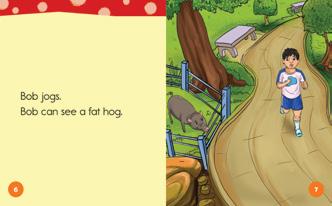
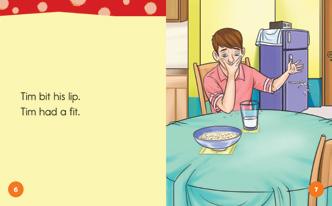
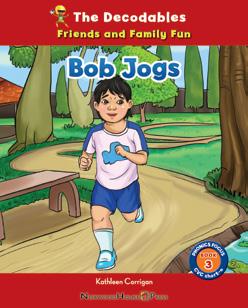
The Decodables — Friends and Family Fun (Set 2)






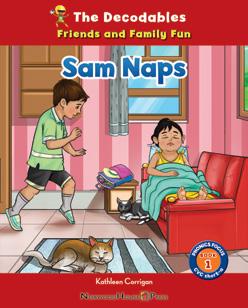

Sam Naps


Tim Has a Fit
Bob Jogs

Mutt and Pug
Ben Gets a Pet
The Vet Has a Party
Chet Goes to the Beach
Chet and Shan Find Shells
Thunder at the Beach

Zack and Chet on the Dock
Zack and the Whale
At the Beach
Phonics Focus
CVC short-a
CVC short-i
CVC short-o
CVC short-u
CVC short-e
CVC all vowels
CVC ch digraph








CVC sh digraph
CVC th digraph





CVC ck-digraph
CVC wh-digraph
CVC all short vowels and digraphs
7
Bob Jogs
Tim Has a Fit
Sam Naps
Sam Naps (short a) — Teacher Notes
Component: Materials: Lesson Plan:
Phonemic Awareness Warm Up
● Plastic chips (3 per student)
See page 3 for instructions on how to use n/a
Blend:
Sam, sad, lap, hat, fan,cat, bag, bam, Dan, jam
Segment:
Sam, sad, lap, hat, fan,cat, bag, bam, Dan, jam
First Lesson in Series
Introduce New Concept (I do)
● Letter tiles on pages 42–49
Introduce short /a/ sound.
Model mouth placement when making the sound. Show the letter tile for lowercase a.
Model segmenting to read words using letter tiles.
Focus Words: Sam, sad, lap
Guided Practice (We do) Extended Practice (You do)
● Letter tiles on pages 42–49
Use letter tiles to spell the words while students spell the words using their own letter tiles.
Together, segment each word into its individual sounds, then blend the sounds together to read the word.
Focus Words: hat, fan, cat, bag, bam
Dictation Practice
● Word Cards on page 9–10
Flash the word cards and have students read the whole word, only segmenting if they need to.
Repeat as needed until students are able to read the words without segmenting.
Focus Words: Sam, sad, lap, hat, fan, cat, bag, bam, Dan, jam
Connect to Word Meanings
Connected Text
● Dry erase board / marker
Dictate 4 words for spelling and 1 sentence.
Words: Sam, sad, lap, fan Sentence: Sam is sad.
nap- to sleep for a short time
Ask students to share about a time they took a nap.
● The book Sam Naps
Before reading, have students find the focus words they have been reading and spelling in the text.
Explain that they should be able to read them right away, but if they need to, they may segment the sounds.
Chorally read the story.
Ask students to whisper- read one more time for fluency.
8
Review Previous Lesson
Sam sad lap hat fan cat
bag bam
Dan jam
Graphic Organizer
Date:
14
Name:
What is in a Bog?
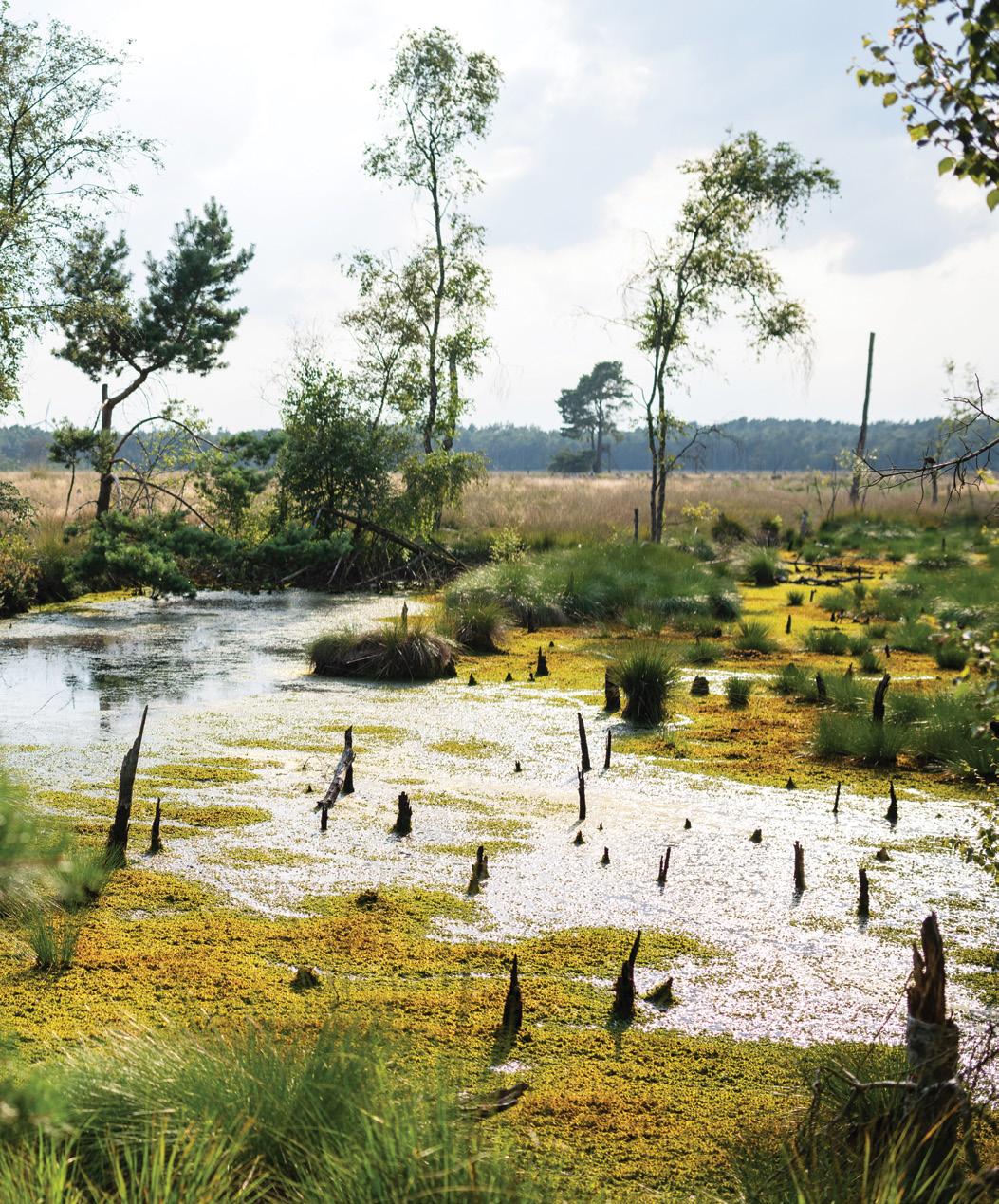
18
Name: Date:
path math mash thin shin chin thick tenth with Word List for Thunder at the Beach 34
Zack and Chet on the Dock (digraph -ck)
Component: Materials: Lesson Plan:
Phonemic Awareness Warm Up
● Plastic chips (4 per student) See page 3 for instructions on how to use
Blend: ask, Zack, beach, fish, pack Segment: tack, box, pick, kick, lock, stuck
Review Previous Lesson
Introduce New Concept (I do)
● Letter tiles on pages 42–49
● Digraph tiles on pages 50–51
Review all short vowel sounds and /ch/, /sh/and /th/ sounds. Build words using letter tiles with review sounds for students to decode.
Introduce /ck/ sound.
Model mouth placement when making the sound. Show the letter tile for lowercase ck.
Review digraph definition: 2 letters that make 1 sound. Ck can be found at the end of a syllable.
Model segmenting to read words using letter tiles.
Focus Words: pack, tack, lock, quack
Guided Practice (We do) Extended Practice (You do)
● Letter tiles on pages 42–49
Use letter tiles to spell the words while students spell the words using their own letter tiles.
Together, segment each word into its individual sounds, then blend the sounds together to read the word.
Focus Words: back, dock, duck, thick, kick
Dictation Practice Connect to Word Meanings
● Word Cards on pages 36–38 (1 set per pair)
Hand out sets of word cards to pairs of students. Students read each word, only segmenting if needed, then sort the words into piles based on their medial vowel sound.
Once sorted, students should reread each card.
Focus Words: back, pack, quack, Zack; ick, kick, pick, quick, thick; dock, lock, sock, rock; duck; muck
● Dry erase board / marker
Dictate 4 words for spelling and 1 sentence.
Words: back, quick, dock, muck
Sentence: Chet is stuck in thick muck.
Connected Text
● Vocabulary Web Graphic Organizer on page 39 (teacher only)
Write “tackle” in the center of the vocabulary web graphic organizer. Have students share all the definitions of tackle they know and draw a sketch to represent each definition.
Sare additional definitions if they do not know them.
- equipment needed for fishing (as used in text)
- to knock down another player during a sport
- to make an effort to deal with a problem
Bring attention to the definition that’s used in the text.
● The book Zack and Chet on the Dock
Before reading, have students find the focus words they have been reading and spelling in the text.
Explain that they should be able to read them right away, but if they need to, they may segment the sounds.
Point out words with suffix -s and suffix -es and support decoding. Chorally read the story.
Ask students to whisper-read one more time for fluency.
35
back pack quack Zack
ick kick
pick quick thick dock
lock sock
rock duck muck
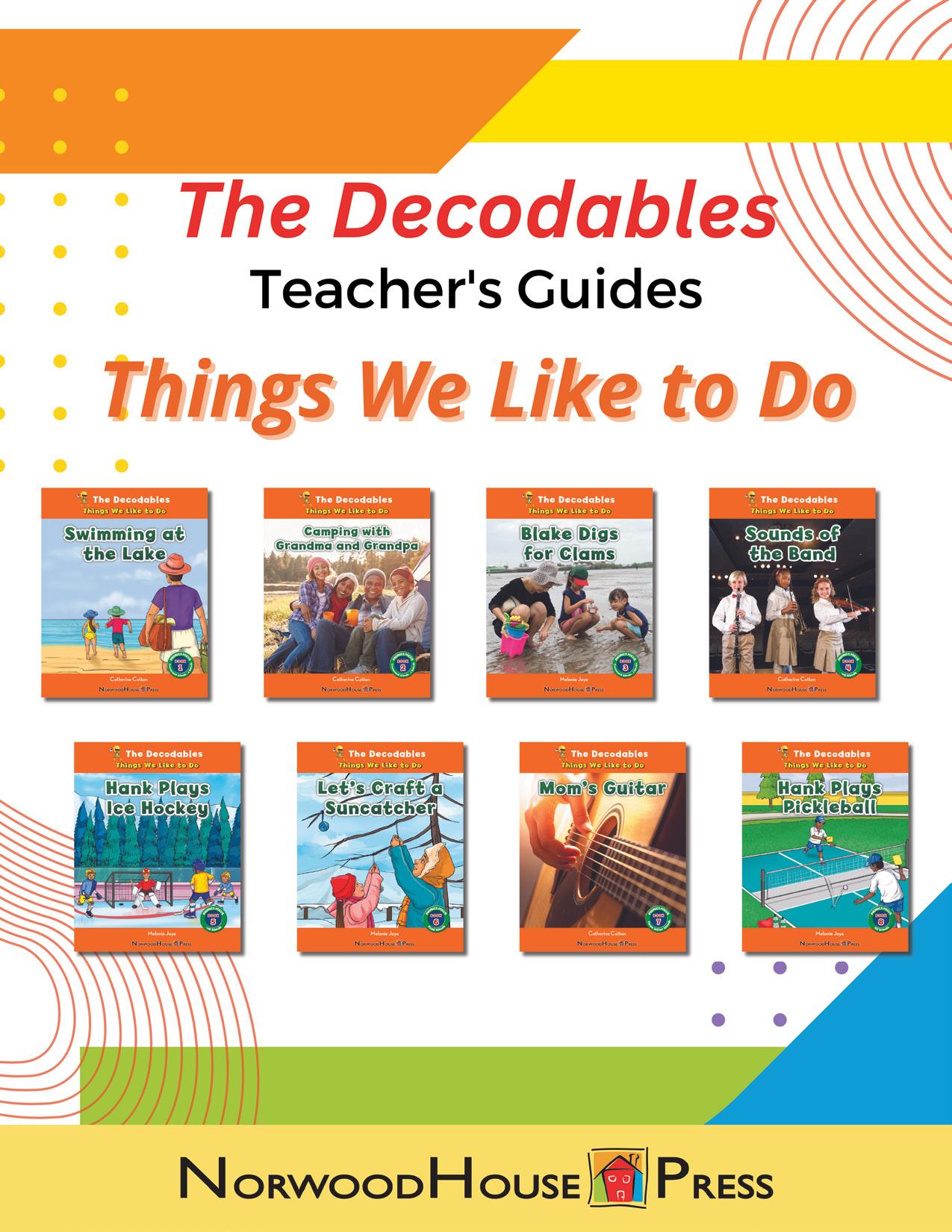
Things We Like To Do — Overview
This series of decodables books for early readers explore activities that offer a mix of the familiar and a little bit new. Each cumulative book helps readers learn to incorporate consonant blends and key suffixes in their reading. The books introduce each new blend while incorporating patterns that were previously taught in this set of books and earlier Decodables sets. Examples of high frequency words are also included. The Things We Like to Do series offers intriguing books with ample opportunities to practice the central blend. Each title includes a note to the caregiver and a word list organized by Focus words, High-Frequency words and Challenge words.
The Decodables — Things We Like to Do (Set 3)
Swimming at the Lake
Camping with Grandma and Grandpa

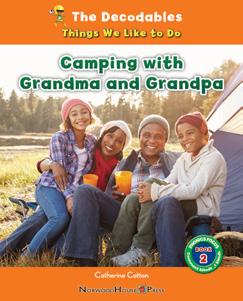
Blake Digs for Clams
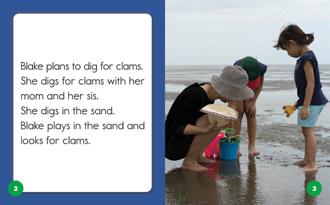
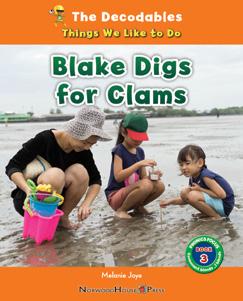
Consonant blends _s blends
Consonant blends _r blends



Consonant blends _l blends





Sounds of the Band -ng blends

Hank Plays Ice Hockey -nk blends
Let’s Craft a Suncatcher Final blends
Mom’s Guitar

3 letter blends
Hank Plays Pickleball All blends
7
Phonics Focus
Blake Digs for Clams
Camping with Grandma and Grandpa
Camping with Grandma and Grandpa
Blake Digs for Clams (l blends) — Teacher Notes
Component: Materials: Lesson Plan: Phonemic Awareness
Use fingers to tap the individual sounds of each word. Blend: black, clam, flip, glad, plan, slip Segment: blast, clasp, plop, slips
● Blend Cards on pages 39–43
Review all vowel sounds, s blends and r blends using cards: sc, sk, sl, sm, sp, st, br, cr, dr, fr,gr, pr, tr Flash the cards and have students read them fluently.
● Blend Cards on pages 39–43
Introduce l blends: bl, cl, fl, gl, pl, sl
Review that a blend has 2 or 3 consonants right next to each other in a word. Each consonant makes its own sound but your mouth moves quickly from one sound to the next. Some blends can be found at the beginning and the end of words.
Practice reading the blends in isolation, quickly moving from one sound into the next.
● Letter tiles on pages 29–36
Use letter tiles to spell the words while students spell the words using their own letter tiles.
Together, segment each word into its individual sounds, then blend the sounds together to read the word.
Focus Words: black, clam, flip, glad, plan, slip
● Word Cards on pages 17–18
Flash the word cards and have students read the whole word, only segmenting if they need to.
Repeat as needed until students are able to read the words without segmenting.
Focus Words: blast, black, clam, clasp, flip, glad, plan, plop, slip
Meanings
Connected Text
● Dry erase board/ marker
Dictate 4 words for spelling and 1 sentence.
Words: black, clasp, flip, slip Sentence: She plans to dig for clams.
cluster- a group of similar things or people positioned closely together. Have students share examples of things that can be found in a cluster.
● The book Blake Digs for Clams
Before reading, have students find the focus words they have been reading and spelling in the text.
Explain that they should be able to read them right away, but if they need to, they may segment the sounds.
Chorally read the story.
Ask students to whisper- read one more time for fluency.
16
Warm Up Review Previous Lesson Introduce New
(I
Concept
do)
(We
Extended
(You
Guided Practice
do)
Practice
do) Dictation Practice Connect to Word
n/a
blast black clam clasp
flip glad
plan plop slip
Sounds of the Band (-ng blends) — Teacher Notes
Component: Materials: Lesson Plan:
Phonemic Awareness Warm Up
● Plastic chips (4 per student) See page 3 for instructions on how to use
● Hand held Mirrors (1 per student -or- 1 per group to share)
Introduce the /ng/ sound to students by bringing attention to the place and manner of articulation: the back of the tongue lifts to the top of the throat; voice is on; sound comes from the nose. Use mirrors so students can see how their mouth is creating the sound.
Blend: bang, lung, song, zing, clang, bling
Segment: bong, gong, sing, pling, swing, clang
Review Previous Lesson
● Blend Cards on pages 39–43
Review all vowel sounds, s blends, r blends and l blends using cards: sc, sk, sl, sm, sp, st, br, cr, dr, fr,gr, pr, tr, bl, cl, fl, gl, pl, sl Flash the cards and have students read them fluently.
Introduce New Concept (I do)
● Letter tiles on pages 29–36
Introduce -ng blend as a blend with two consonants that are so closely made they actually make one sound. Show the letter tiles for n and g.
Model segmenting to read words using letter tiles.
Focus Words: bang, lung, song, pling
Guided Practice (We do)
● Letter tiles on pages 29–36
Use letter tiles to spell the words while students spell the words using their own letter tiles.
Together, segment each word into its individual sounds, then blend the sounds together to read the word.
Focus Words: sing, swing, clang
Extended Practice (You do)
● Word List on page 20 organized by vowel sound
Have students read the word list by reading the whole word, only segmenting if they need to.
Students may reread to build automaticity and fluency.
Focus Words: bang-> clang; bling-> pling-> sing-> swing-> string-> ting-> ling-> zing; long-> bong-> gong-> song; lung
Dictation Practice
● Dry erase board/ marker
Dictate 4 words for spelling and 1 sentence. Words: bang, pling, string, lung
Sentence: The strings we pluck go pling, pling.
Connect to Word Meanings
Connected Text
● The book Sounds of the Band
Introduce -ing as a suffix that makes a verb happen in the present tense.
Discuss the meaning of the following words: banging, playing, singing, clanging.
Have students act out each word.
Before reading, have students find the focus words they have been reading and spelling in the text.
Explain that they should be able to read them right away, but if they need to, they may segment the sounds.
Chorally read the story.
Ask students to whisper- read one more time for fluency.
19
20
Word List for Sounds of the Band
bang clang long bong gong song lung bling pling sing swing string ting ling zing
Hank Plays Ice Hockey (-nk blends) — Teacher Notes
Component: Materials: Lesson Plan:
Phonemic Awareness
Warm Up
● Plastic chips (4 per student)
See page 3 for instructions on how to use
Introduce the /nk/ sound to students by bringing attention to the place and manner of articulation: the back of the tongue lifts to the top of the throat; voice is on; sound comes from the nose, followed by /k/. Use mirrors so students can see how their mouth is creating the sound. Contrast the /nk/ sound with /ng/ sound.
Blend: Hank, thank, rink, honk, dunk, clunk, plunk
Segment: sank, tank, drink, sink, think, honk, spunk, stunk
Review Previous Lesson
● Blend Cards on pages 39–43
Review sounds that students continue to struggle with: all vowel sounds, s blends, r blends and l blends. Be sure to include the newly taught ng sound.
Flash the cards and have students read them fluently.
Introduce New Concept (I do)
● Letter tiles on pages 29–36
Introduce -nk blend as a blend with two consonants. Each consonant makes its own sound. When n is followed by k, it makes the /ng/ sound.
Show the letter tiles for n and k.
Model segmenting to read words using letter tiles.
Focus Words: rink, honk, dunk
Guided Practice (We do)
● Letter tiles on pages 29–36
Use letter tiles to spell the words while students spell the words using their own letter tiles.
Together, segment each word into its individual sounds, then blend the sounds together to read the word.
Focus Words: thank, think, spunk, stunk
Extended Practice (You do)
● Word List on page 22
Have students read the word list by reading the whole word, only segmenting if they need to.
Students may reread to build automaticity and fluency.
Focus Words: Hank, thank, rink, honk, dunk, clunk, plunk, sank, tank, drink, sink, think, spunk, stunk
Dictation Practice
● Dry erase board/ marker
Dictate 4 words for spelling and 1 sentence.
Words: drink, plunk, thank, stunk
Sentence: Hank sinks the puck in the net.
Connect to Word Meanings
Connected Text
● The book Hank PlaysIceHockey
● The book Hank PlaysIceHockey
Help students build background knowledge before reading. Hockey has a lot of equipment. Take a picture walk through the book and point out the following: rink, hockey stick, skates, goal/ net, zamboni
Before reading, have students find the focus words they have been reading and spelling in the text.
Explain that they should be able to read them right away, but if they need to, they may segment the sounds. This text has a number of notyet- decodable words that students will need support reading.
Chorally read the story.
Ask students to whisper- read one more time for fluency.
21
22
thank rink honk dunk clunk plunk sank tank drink sink think spunk stunk Word List for Hank Plays Ice Hockey
Hank

Activities with Friends — Overview
Activities with Friends is a set of six delightful decodables books designed to provide young readers with chances to work with long vowels in vowel-consonant-e pattern words. The cumulative stories are peopled with a recurring set of young friends who have lots of fun playing and exploring together. Readers will feel right at home as they discover the friends’ adventures while also discovering their talents as decoders of long vowel words. Each book in the series includes a note to the caregiver and a word list that is organized by Focus words, High-Frequency words and Challenge words. Downloadable Teacher’s Guides are available.

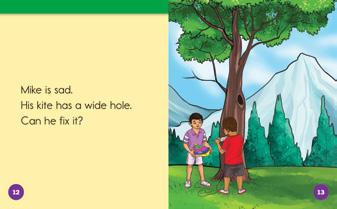

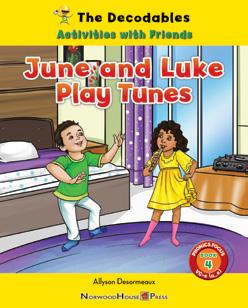

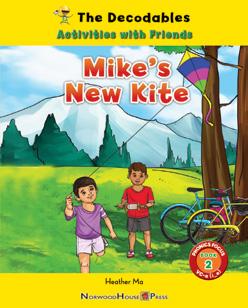
The Decodables — Activities with Friends (Set 4)







Nate and Jane Bake a Cake
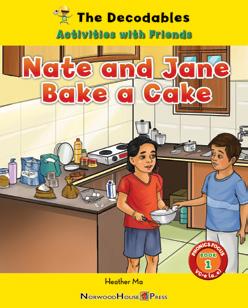
Mike’s New Kite
Rose and Hope Help Joe
June and Luke Play Tunes
At the Theme Park
The Friends Go to Camp
VC-e (a_e)
VC-e (i_e)
VC-e (o_e)
VC-e (u_e)
VC-e (e_e)
VC-e review
7
Phonics Focus
At the Theme Park
Mike’s New Kite
Mike’s New Kite
Nate and Jane Bake a Cake (a_e) — Teacher Notes
Component: Materials: Lesson Plan:
Phonemic Awareness
Warm Up
● Plastic chips (3 per student)
See page 3 for instructions on how to use
Blend: ate, bake, game, late Segment: cake, made, make, name, plate
Review Previous Lesson
● Letter tiles on pages 29–36
Use letter tiles to review short vowels, digraphs and blends as needed by students
Introduce New Concept (I do)
● Letter tiles on pages 29–36
Introduce the long /a/ sound. Model mouth placement when making the sound.
Model spelling words using a_e.
Spell at and ask students to read. Model adding e to the end of the word to change the pronunciation to ate.
Spell mad and ask students to read. Model adding e to the end of the word to change the pronunciation to made.
Model segmenting to read words using letter tiles.
Focus Words: bake, cake, game
Guided Practice (We do)
● Letter tiles on pages 29–36
Use letter tiles to spell the words while students spell the words using their own letter tiles.
Together, segment each word into its individual sounds, then blend the sounds together to read the word.
Focus Words: ate, made, late, make, plate
Extended Practice (You do)
● Word Cards on pages 9–11
Have students read the word cards by reading the whole word, only segmenting if they need to.
Students may reread to build automaticity and fluency.
Focus Words: bake, cake, game, ate, made, late, make, plate, Jane, Kate, name, Nate, Wade
Dictation Practice
● Dry erase board / marker
Dictate 4 words for spelling and 1 sentence.
Words: game, late, mad, made
Sentence: Wade and Kate like the cake, too.
Connect to Word Meanings Connected Text
● The Book Nate and Jane Bake a Cake
Verbs are words that show an action.
Find all of the verbs in the text before reading the whole story. bake, mix, make, pick, wash, play, come, put, cut, like
● The Book Nate and Jane Bake a Cake
Before reading, have students find the focus words they have been reading and spelling in the text. Explain that they should be able to read them right away, but if they need to, they may segment the sounds. Chorally read the story.
8
bake cake game ate made late
make plate Jane Kate name Nate
Wade
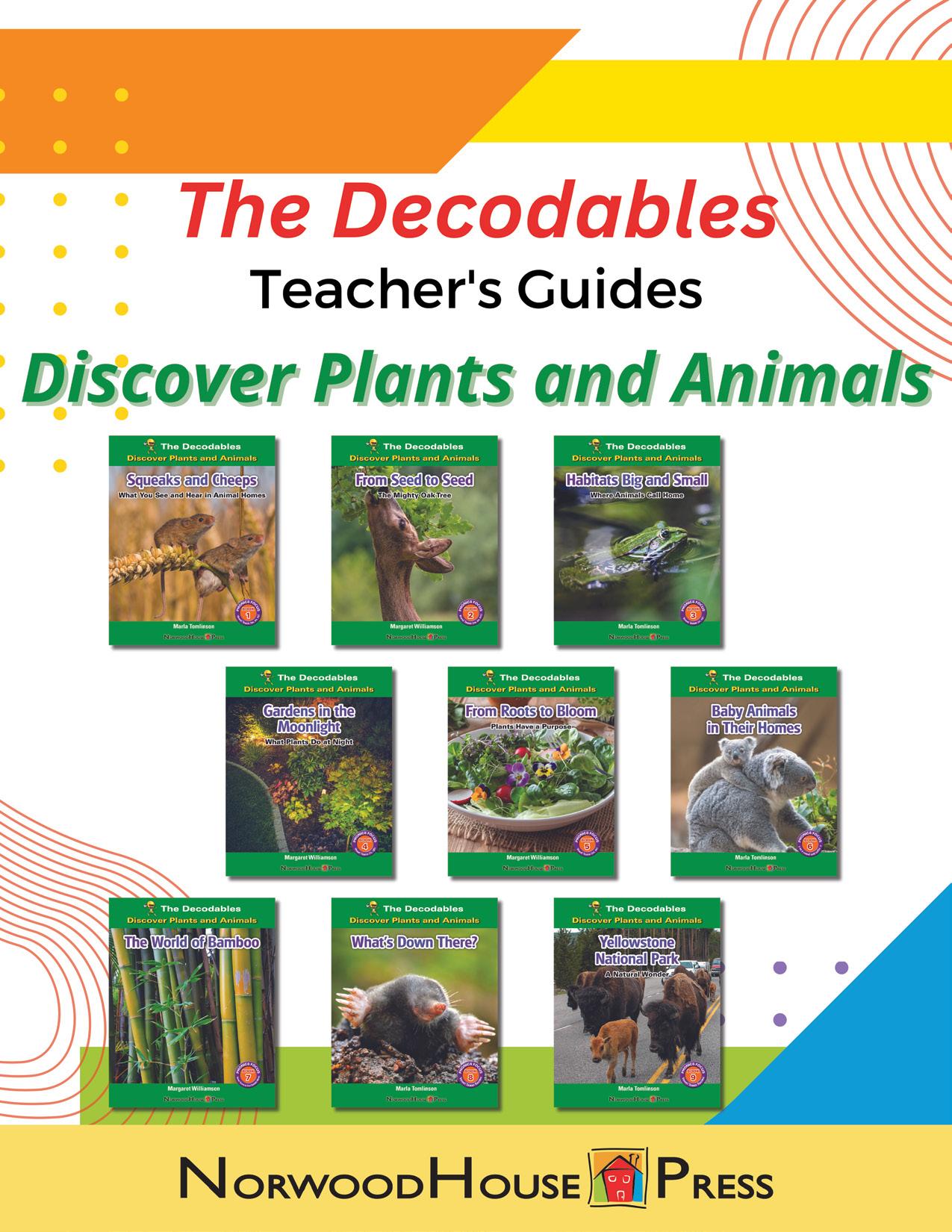
Discover Plants and Animals — Overview
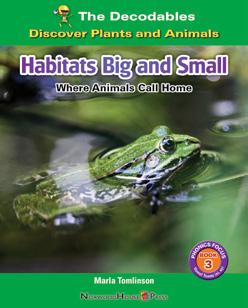
This series focuses on developing readers’ decoding skills using several different vowel teams and the suffix y while also learning about various plants and animal habitats. Each nonfiction book offers a range of text features such as table of contents, glossary, index and fun facts. The books provide practice blending words containing specific vowel teams as well as interesting scientific information in cumulative order. Readers will gain confidence as they progress through these beautiful, informative, and fun books. Includes a note to the caregiver and a word list that is organized by Focus words, High-Frequency words and Challenge words. Downloadable Teacher’s Guides are available.
The Decodables — Discover Plants and Animals (Set 5)








Squeak and Cheeps: What You See and Hear in Animal Homes
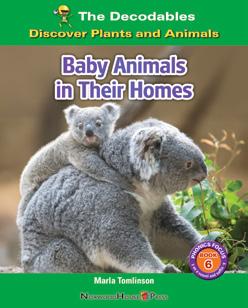
From Seed to Seed: The Mighty Oak Tree

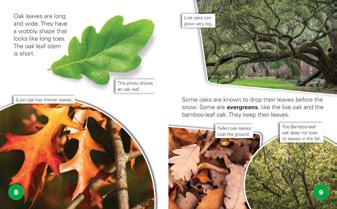

Habitats Big and Small: Where Animals Call Home
Gardens in the Moonlight: What Plants Do at Night
From Roots to Bloom: Plants Have a Purpose
Baby Animals in Their Homes
The World of Bamboo
What’s Down There?
Yellowstone National Park: A Natural Wonder
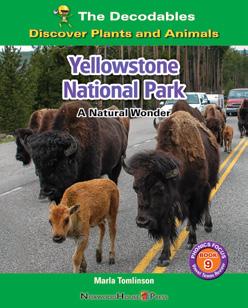
Phonics Focus
Vowel Teams (ee, ea, ey)
Vowel Teams (oa, oe, ow)
Vowel Teams (ai, ay)
Vowel Teams (ie, igh)
Vowel Teams (oo, ue)
Vowel Teams (y as a vowel, suffix -y)
Vowel Teams in 2 syllable words
Vowel Teams Review
Vowel Teams Review
7
Habitats Big and Small: Where Animals Call Home
From Seed to Seed: The Mighty Oak Tree From Seed to Seed: The Mighty Oak Tree
Squeak and Cheeps: What You See and Hear in Animal Homes (ee,ea,ey) — Teacher Notes
Component: Materials: Lesson Plan:
Phonemic Awareness Warm Up
● Plastic chips (5 per student) See page 3 for instructions on how to use
Blend: clean, creak, feast, gleam, squeak, screech, creek, sleep Segment: scream, greet, sleek, stream, sneak, tweet, breeze, breech
Review Previous Lesson
Introduce New Concept (I do)
● Letter tiles on pages 26–33
● Letter tiles on pages 26–33
Use letter tiles to review short and long vowel sounds. Review VCe spellings
Review long /e/ sound. Model mouth placement when making the sound. Long /e/ is sometimes spelled with e_e, but more often it’s spelled with ea, ee, or ey (only at the end of a word).
Model segmenting to read words using letter tiles.
Focus Words: heat, teal, seed, seek, deep, key
Guided Practice (We do) Extended Practice (You do)
Dictation Practice
● Letter tiles on pages 26–33
Use letter tiles to spell the words while students spell the words using their own letter tiles.
Together, segment each word into its individual sounds, then blend the sounds together to read the word.
Focus Words: meal, fear, weave, feed, keep, sleep
● Word List on page 9
● Dry erase board / marker
Students highlight the vowel team in each word. Read each word in the list, only segmenting sounds if needed.
Dictate 4 words for spelling and 1 sentence. Because there is no rule stating when to use ea -vs- ee, students should be told which spelling to use.
Words: ea- clean, feast ee- cheep, creek
Sentence: Seals sleep on the sand or rocks in a big heap.
Connect to Word Meanings
● The Book Squeak and Cheeps: What You See and Hear in Animal Homes
Turn to the glossary in the back of the book. Explain the purpose of the glossary. Find the word, key. Discuss the meanings of key and highlight the definition used in the text.
key
- a tool used to open a lock
- the main part of something (as used in text)
- important
As you read the story, look for the key habitats described in the text.
Connected Text
● The Book Squeak and Cheeps: What You See and Hear in Animal Homes
This reading will happen over the course of a few days. Before reading, have students find the focus words they have been reading and spelling in the first few pages of the text.
Explain that they should be able to read them right away, but if they need to, they may segment the sounds.
Chorally read the first page of the text. Ask students to whisper- read the next few pages while you listen in on each student.
Continue with this procedure until the text is complete. Consider assigning independent reading of some of the pages.
8
9
beach sea beak leap seals beans least bees green breeds seems cheek meet seen monkey Word List for Squeak and Cheeps: What You See and Hear in Animal Homes
What’s Down There? (Vowel Team Review) — Teacher Notes
Component: Materials: Lesson Plan:
Phonemic Awareness
Warm Up
Review Previous Lesson
Introduce New Concept (I do)
● Sorting sheet on pages 38–39
● Word Cards on page 23
Blend: beak, seed, grow, lay, bright, scoop, dry Segment: stream, sweet, stow, soap, play, trail, sight
Review all vowel teams spelled: ai/ ay, ea/ee/ey, ie/ igh, oa/ oe/ ow, oo/ue, y
Introduce sorting sheet- (with headings for each vowel team)
Model reading each word card and sorting under the correct sound/ spelling heading.
Guided Practice (We do) Extended Practice (You do)
● Sorting sheet on pages 38–39
● Word Cards on page 23
● Sorting sheet on pages 38–39
● Word Cards on page 23
Choose 3-4 words to sort together by reading aloud and sorting under the correct sound/ spelling heading.
Dictation Practice
● Dry erase board / marker
Students sort the remaining words by reading aloud and selecting the correct sound/ spelling heading
Connect to Word Meanings
Connected Text
● The Book What’s Down There?
Dictate 4 words for spelling and 1 sentence. Words: need, stow, stray, high Sentence: Moles do not see well because they stay underground year after year.
burrow -
- To dig underground (verb)
- An underground home
Practice using the word in two different sentences to show you understand the meanings.
Ex- The woodchuck burrowed in the soil. The chipmunk built a burrow in the ground for its family.
This reading will happen over the course of a few days. Before reading, have students find the focus words they have been reading and spelling in the first few pages of the text. Explain that they should be able to read them right away, but if they need to, they may segment the sounds.
Chorally read the first page of the text.
Ask students to whisper- read the next few pages while you listen in on each student.
Continue with this procedure until the text is complete. Consider assigning independent reading of some of the pages.
22
need stow stray high
Name: Date: Sorting Sheet
38
Name: Date: Sorting Sheet
39
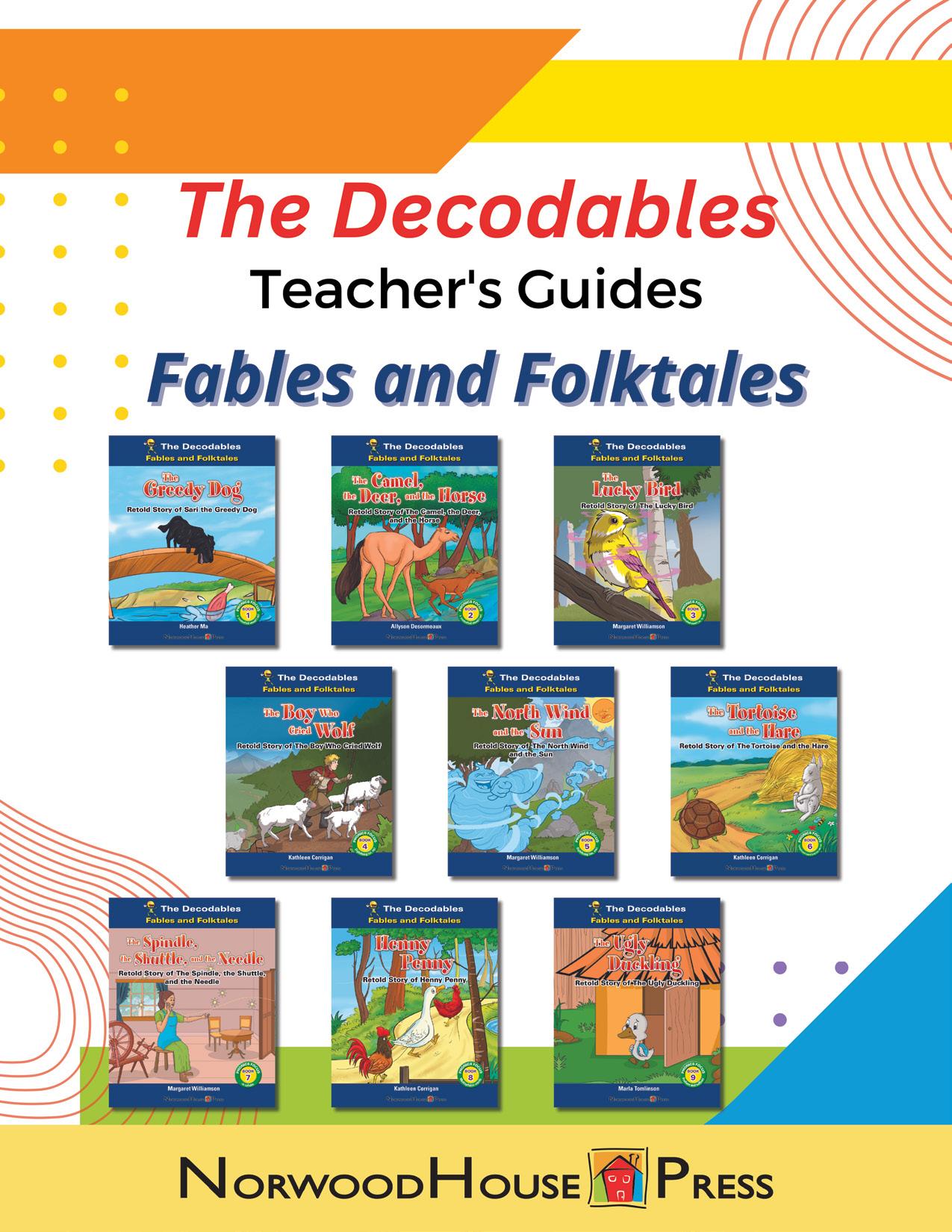
Fables and Folktales — Overview
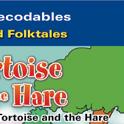

This decodable series offers illustrated retellings of nine classic fables and folktales. Some will be very familiar; others may be less so. All provide a great opportunity for students to dive into cumulative lessons that feature complex letter combinations along with opportunities for critical thinking. They will learn to recognize many r-controlled vowels, diphthongs, complicated vowel teams, the -le syllable, and a range of prefixes and suffixes while also considering some life lessons. Each book includes a glossary, note to the caregiver, and a word list that is organized by Focus words, High-Frequency words and Challenge words. Downloadable Teacher’s Guides are available.



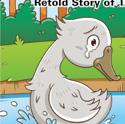
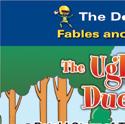
The Greedy Dog
The Camel, the Deer, and the Horse
The Lucky Bird
The Boy Who Cried Wolf
The North Wind and the Sun
The Tortoise and the Hare
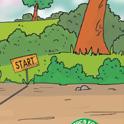

The Spindle, the Shuttle, and the Needle
R Controlled Vowel (-ar)







R Controlled Vowel (-or)
R Controlled Vowel (-er, -ir, ur)
Diphthong (oi, oy)
Diphthong (ow, ou)
Complicated Vowel Team (au, aw, oo)
-le syllable
Henny Penny Multi-syllabic words
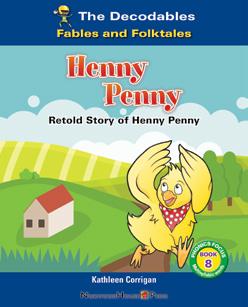

The Ugly Duckling Prefixes and Suffixes




7
The Decodables — Fables and Folktales (Set 6)
Phonics Focus
The Ugly Duckling
The Greedy Dog
The Ugly Duckling
The Greedy Dog (ar) — Teacher Notes
Component: Materials: Lesson Plan:
Phonemic Awareness Warm Up
Teacher says each word while students repeat. Barn, dark, hard, sharp, far, large, park, bark, farm, march, yard What sound do they all have in common? (/ar/)
Review Previous Lesson
Introduce New Concept (I do)
● Letter tiles on pages 43–50
● Letter tiles on pages 43–50
Select letter patterns to review based on student need
Introduce /ar/ sound.
Model mouth placement when making the sound. The mouth has two placements for the sound.
Show the letter tiles for lowercase ar and explain that ar is an rcontrolled vowel sound. The r changes the sound a makes. Model segmenting to read words using letter tiles.
Focus Words: bark, march, yard
Guided Practice (We do)
● Letter tiles on pages 43–50
Use letter tiles to spell the words while students spell the words using their own letter tiles.
Together, segment each word into its individual sounds, then blend the sounds together to read the word.
Focus Words: arch, far, started
Extended Practice (You do)
● Word Cards on page 9–11
Flash the word cards and have students read the whole word, only segmenting if they need to.
Repeat as needed until students are able to read the words without segmenting.
Focus Words: arch, bar, bark, barn, charged, charming, dark, far, farm, hard, large, marched, market, park, Sari, sharp, started, yard
Dictation Practice
● Dry erase board / marker
Dictate 4 words for spelling and 1 sentence. Words: far, dark, marched, started Sentence: Sari let out a large bark.
Connect to Word Meanings
Connected Text
● The Book The Greedy Dog
startto begin (as used in the text) to give a sudden jerk the point in time or space that something begins. Discuss many meanings and practice using each definition in a sentence.
This reading may happen over the course of a few days.
Before reading, have students find the focus words they have been reading and spelling in the first few pages of the text. Explain that they should be able to read them right away, but if they need to, they may segment the sounds.
Chorally read the first page of the text.
Ask students to whisper- read the next few pages while you listen in on each student.
8
arch bar bark barn charged charming
dark far farm hard large marched
market park Sari sharp started yard
Henny Penny (Multisyllabic Words) — Teacher Notes
Component: Materials: Lesson Plan:
Phonemic Awareness
Warm Up
Review Previous Lesson
● Dry erase
Repeat the word and count the number of syllables in each word: acorn, chipmunk, darker, hungry, lucky, scratching, something, tractor, yummy
Review vowel teams as needed by your students. Review the -le syllable type. Review splitting syllables between two consonant graphemes in the middle of the word.
Focus Words: scramble, sparkle, shuffle
Introduce New Concept (I do)
● Dry erase board / marker
Introduce splitting words into two syllables by writing the words on the board and drawing a slash to split the syllable.
Each syllable has to have a vowel grapheme.
Identify the two separated vowel graphemes (ex- after)
If there are two consonant graphemes in between the vowels, divide the syllable in between the two consonant graphemes (ex- af/ter).
If there is only one consonant phoneme, split the syllable after the consonant to create a closed- short vowel- first syllable and read the word. (ex- duck/ y- reminder ck is a single consonant grapheme as it represents one sound).
If closing in the first syllable and making a short vowel sound does not make a word that makes sense, try splitting before the consonant grapheme. This makes the first syllable an open- long vowel syllable (ex- tru/ly)
*Syllable division for reading does not always align with syllable division in dictionaries.
Focus Words:trac/tor, scratch/ing, be/gan
Guided Practice (We do)
● Dry erase board / marker
Write the focus words on the board, one at a time, and work through syllable division with students.
Together, segment each word into its syllables, then blend the syllables together to read the word.
Focus Words: lifted, driving, whimper
Extended Practice (You do)
Dictation Practice Connect to Word Meanings
Connected Text
● Word List on page 38
● Dry erase board / marker
Students divide the syllables of each word using a slash, then read the words.
Dictate 4 words for spelling and 1 sentence.
Words: forest, penny, happen, scratching
Sentence: The king was standing on a wagon.
● 4 square vocabulary graphic organizer on page 39
● The Book Henry Penny
scurry - to move quickly
Drawing to represent, student friendly definition, synonyms, antonyms,
This reading may happen over the course of a few days.
Before reading, have students find the focus words they have been reading and spelling in the first few pages of the text. Explain that they should be able to read them right away, but if they need to, they may segment the sounds.
Chorally read the first page of the text.
Ask students to whisper- read the next few pages while you listen in on each student.
37
38
falling Rooster
busy
scamper upon cannot
chicken looking Goosey Word List for
clucking Henny seven other standing beside
under
Foxy listen
little waddled
Henny Penny
Graphic Organizer
39
Name: Date:
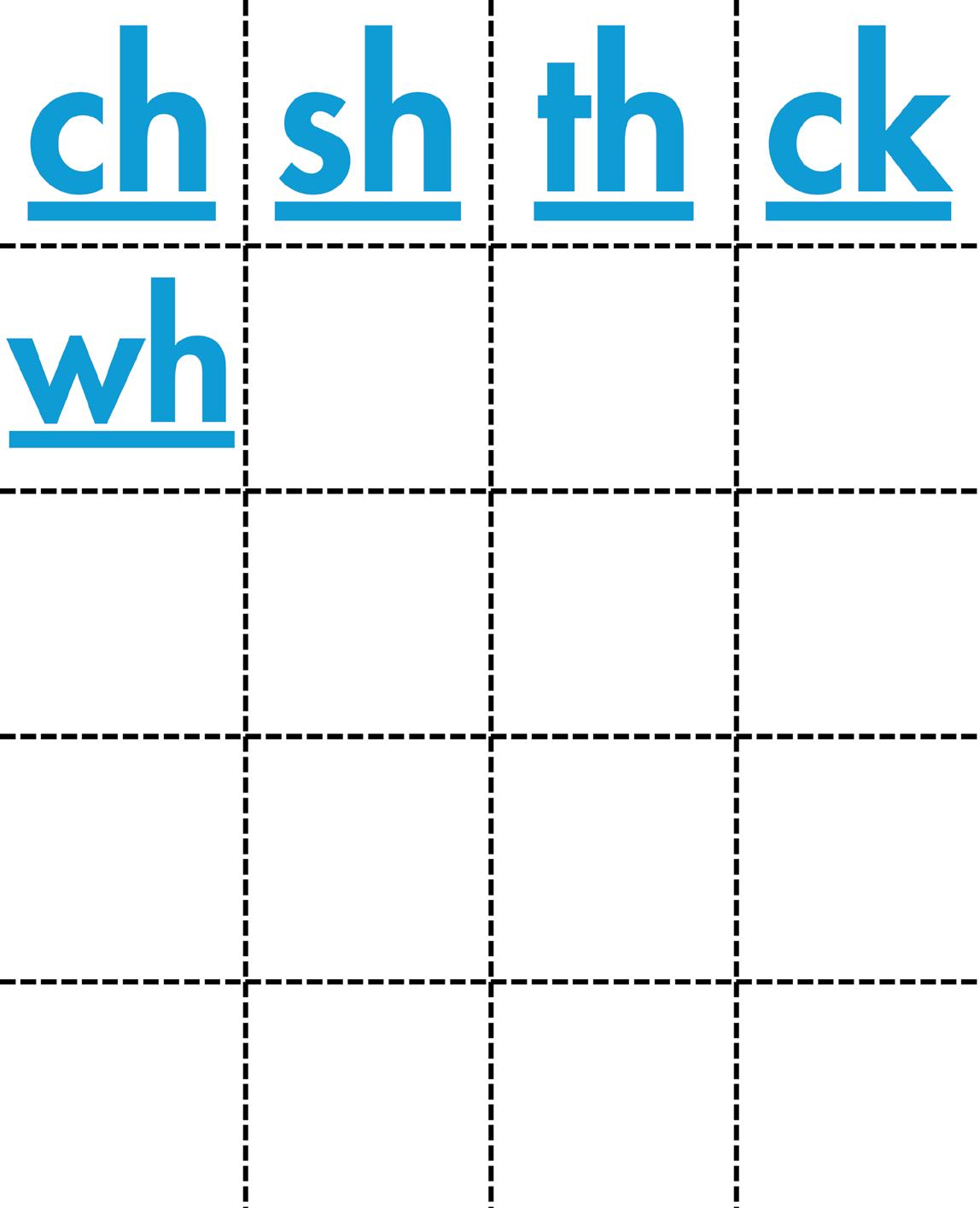
51

52
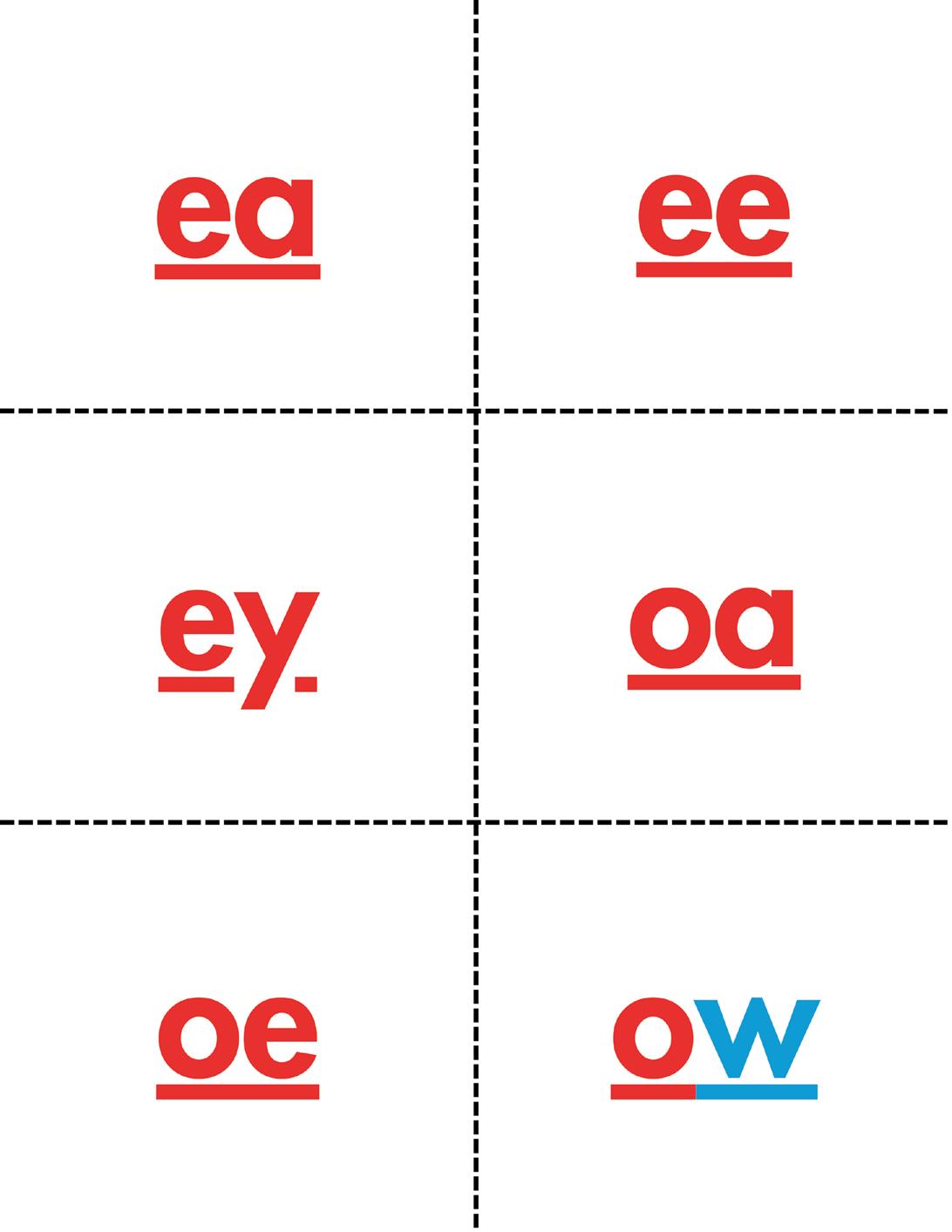
53

54

55
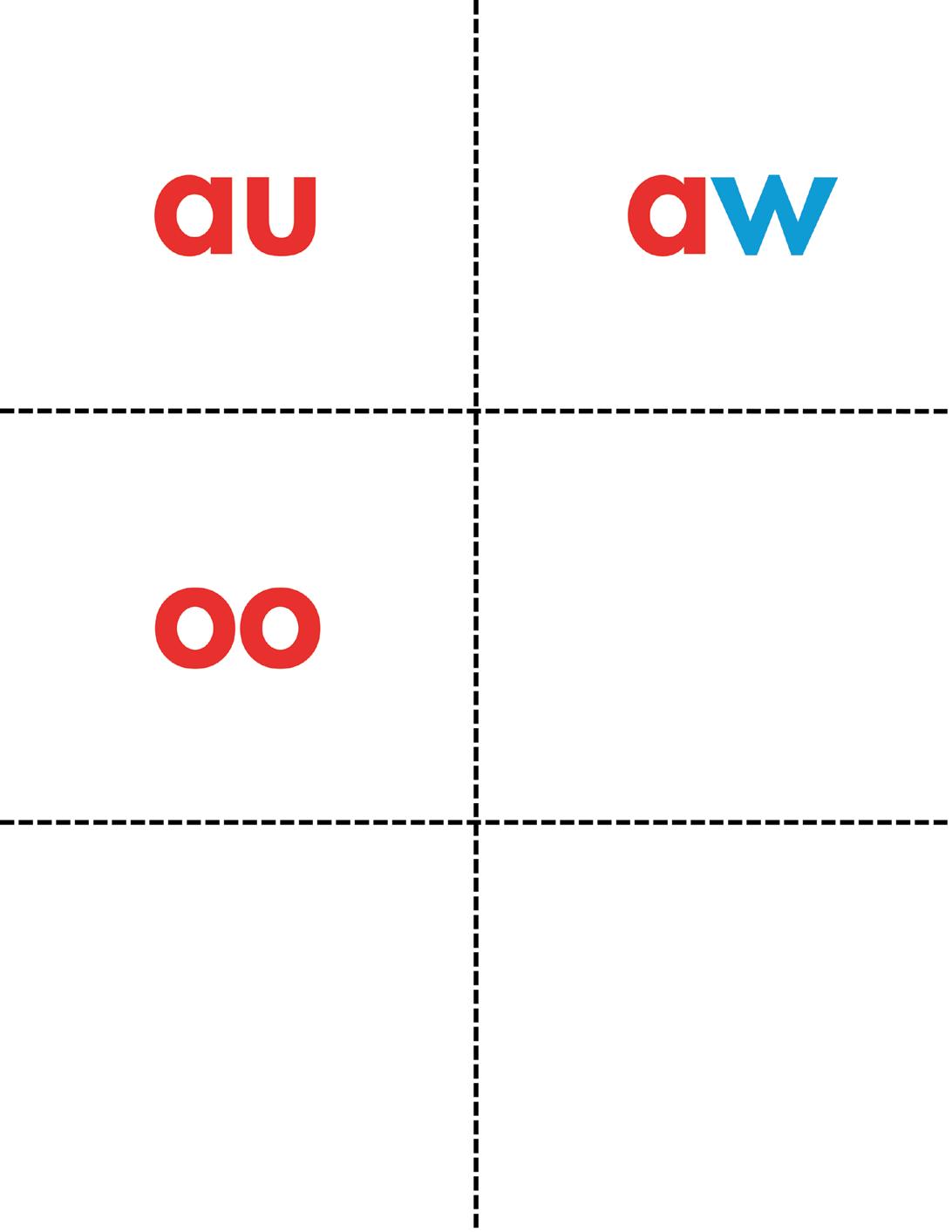
56
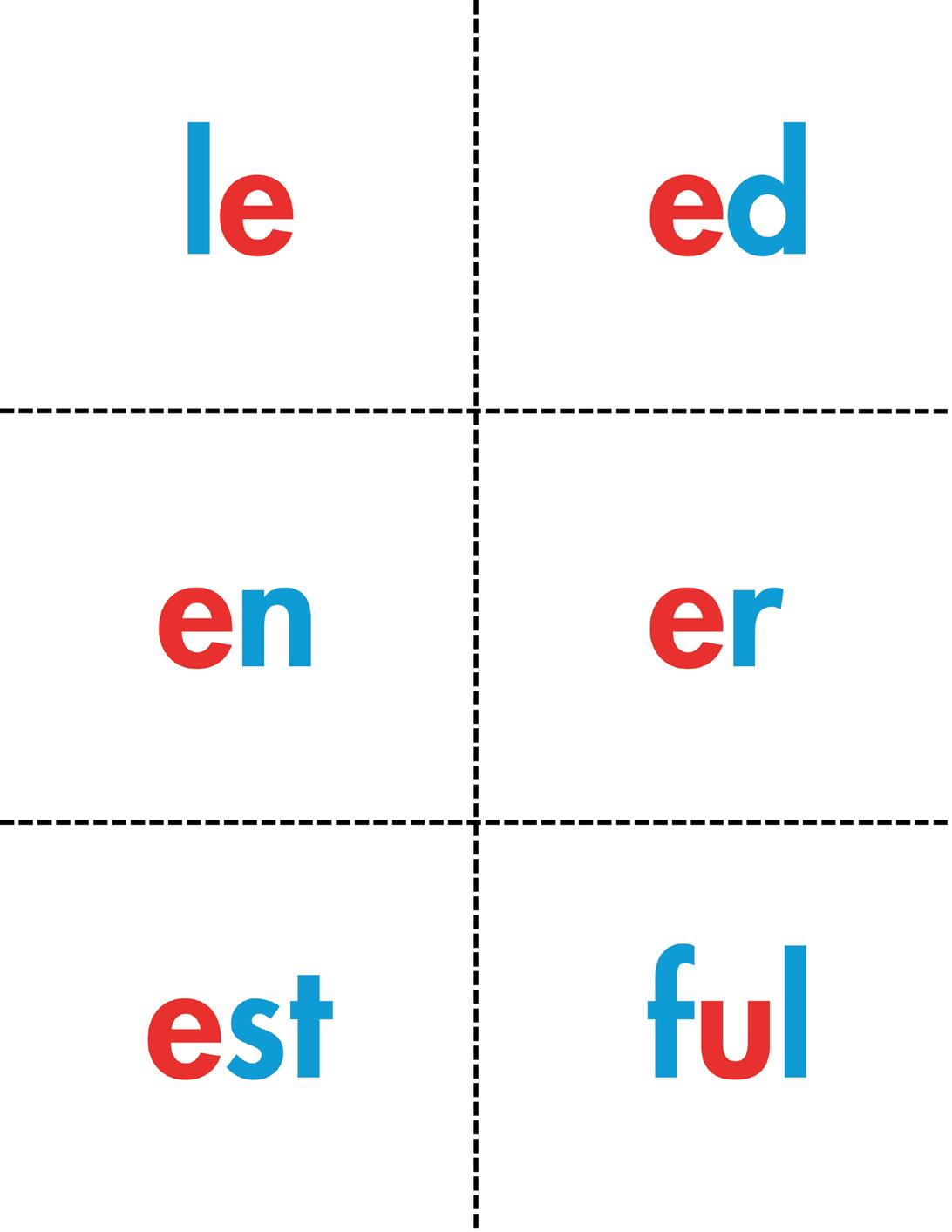
57

58
Name: Date: Sorting Sheet
59
Name: Date: Sorting Sheet
60






















































































































































































